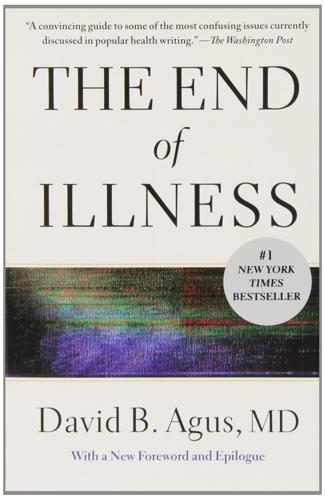
The End of Illness
by
David B. Agus
Published 15 Oct 2012
Think about what it would be like, for instance, to know precisely how to tweak your diet to effortlessly lose twenty pounds for good, or to have a detailed list of things to avoid and things to embrace that make you feel fantastic and be in tip-top shape, or to know what the perfect amount of medicine X is for you to combat affliction Y successfully with no side effects. That’s the promise that personalized medicine has to offer. But, once again, you won’t be able to enjoy the benefits of personalized medicine until you get up close and personal with yourself. Nothing about health is one-size-fits-all, so until you know how to perform your own “fitting,” you won’t be able to live the long and happy life that’s awaiting you. The checklist below used to be buried deep in the book somewhere—long after I’d done a lot of explaining and storytelling—but I’ve since plucked it out and placed it here.
…
This is a seminal work that promises to revolutionize how we live. DAVID B. AGUS, MD, is a professor of medicine and engineering at the University of Southern California Keck School of Medicine and Viterbi School of Engineering and heads USC’s Westside Cancer Center and the Center for Applied Molecular Medicine. He is the cofounder of two pioneering personalized medicine companies, Navigenics and Applied Proteomics. Dr. Agus is an international leader in cancer care and new technologies and approaches for personalized health care and chairs the Global Agenda Council on Genetics for the World Economic Forum. He has received numerous awards, including the 2009 GQ Magazine Rock Star of Science Award.
…
I also hope that your future will be determined by the power of choice, and, when necessary, that it will guide you down pathways of healing. Only you can end illness. PART I The Science and Art of Defining Your Health If I had to sum up this entire book in a single phrase, it would be this: get to know yourself. I don’t mean that in a cosmic or purely psychological way. I’m a big believer in what’s called personalized medicine, which refers to customizing your health care to your specific needs based on your physiology, genetics, value system, and unique conditions. We are finally entering an exciting time in medicine where we have the technology to custom-tailor treatment and preventive protocols just as we’d custom-tailor a suit or designer gown to one’s individual body.
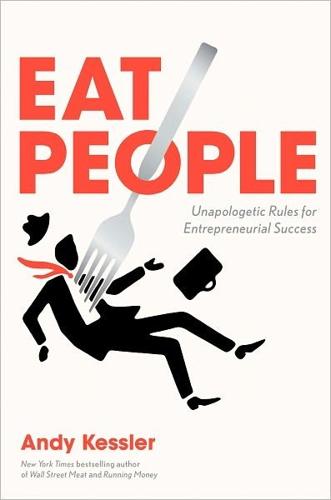
Eat People: And Other Unapologetic Rules for Game-Changing Entrepreneurs
by
Andy Kessler
Published 1 Feb 2011
Today’s voice recognition is mostly awful, but that can be solved with not only faster and more powerful devices at the edge of the network but with algorithms and look-up tables to figure out spoken words and context, which will reside in the cloud. The same is going to happen with biotech and personalized medicine. The biotech industry got big creating new drugs that address smaller and smaller markets, but more effectively. But now what? Already there is a proliferation of protein tests and genomic tests that can start to figure out what unique disease and unique type of cancer you might have. The possibility of creating custom drugs is on the horizon, though held in check by Food and Drug Administration rules oriented around treating everyone with the same disease with the same drugs, rather than personalized one-off drugs.
…
Lying down in giant imagers in specialized hospital rooms will give way to using handheld imagers. Beyond entertainment, this is what anyone with wealth beyond food and shelter spends their dough on. And gladly, if it keeps them ticking. OKAY, AS MUCH as I’m intrigued by personalized technology and personalized medicine, that’s not what I’m really talking about. Those things are in the physical realm. All great stuff, all with enormous productivity possibilities and huge upsides and big pots of wealth in their future. But true adaptive technologies are things that adapt to how you think. This is the big change over the next two decades.
…
Riches will be heaped on Free Radicals who solve the adaptive puzzle, because at the end of the day, augmentation is the ultimate in productivity and we will all benefit. It’s not without its thorns—privacy being the biggest one—but it’s going to be as big a game-changer as everything else. If you can harness adaptive technology, so many other things will fall into place. By the way, voice recognition and personalized medicine have both been spectacular failures as businesses. Am I wrong about this adaptive thing? I don’t think so—there is always the risk of being too early. You don’t front-run Abundance or Scale or what can happen at the edge. Timing is the trickiest part of using these Rules. Something may sound good and still be way too early.
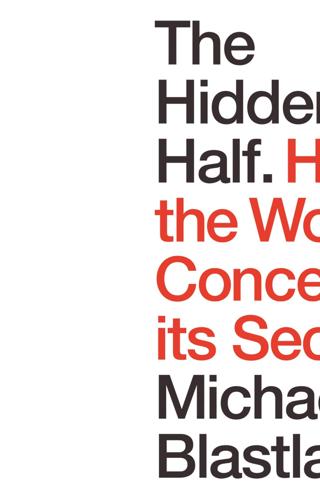
The Hidden Half: How the World Conceals Its Secrets
by
Michael Blastland
Published 3 Apr 2019
Even if we knew everyone’s exact genotype, we have to remember the marmorkrebs’ astonishing variation – from identical genotypes to radically different phenotypes – and rightly wonder how far knowing everyone’s personal genotype can take us in the prediction of what will happen to each person or how they will respond to treatment. My instincts – you can tell – are with the sceptics, and after waving a finger in the air of the argument I’d say that precision or personalized medicine is about one part promise to an equal part hype. If we could settle for talking more modestly of ‘more precise’ medicine, rather than ‘precision’ or ‘personalized’ medicine, I’d feel more comfortable. This limitation is frustrating, as it suggests that to some extent we must live with probabilities which, for all their weaknesses, are often the best we can do. All the more reason, then, to use them properly.
…
However, if we do distinguish properly between weak and powerful probabilities, there is a genuine prize. This is more clarity about where governments and others can make a real difference. Probabilities can begin to do their job – at the big scale where they mostly belong – and help us to spot the more insistent patterns that we might most want to change. The age of personalized medicine? The problem of group knowledge turning to ignorance when we switch to an individual scale raises a natural question about where we should focus our efforts at tackling disease and other problems. Should we aim big – at the society or group level – or small, at the individual? How far is it even possible to aim small, given that so much of what we know is probabilistic, and probabilities are big-scale knowledge that can be poorly predictive for the individual?
…
This is the idea which at its most ambitious suggests we will soon be able to tailor treatment to the precise personal characteristics of each patient – so that drugs always work optimally – and even perhaps know from their genome which illnesses patients will have and how best to treat them. I fear that this talk feeds unrealistic expectations. There have been without question some startling advances in our ability to discover the basis of people’s illnesses, especially in genetics. But personalized medicine has several critics who wonder how far it’s feasible to know enough about individuals to treat them precisely or personally.22 Knowledge in medicine relies heavily – in research and in practice – on averages and probabilities: big-scale knowledge. It is very far from personalized, for good reason.
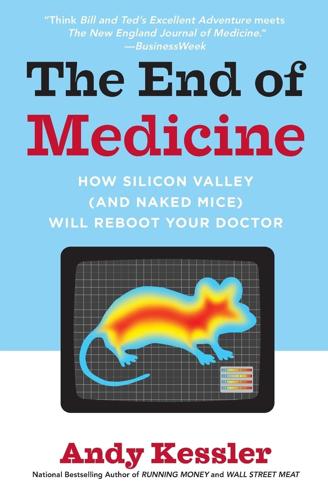
The End of Medicine: How Silicon Valley (And Naked Mice) Will Reboot Your Doctor
by
Andy Kessler
Published 12 Oct 2009
“Well, we don’t want to give it all away at this conference, but once this CT-scanning phenomenon plays out, however many years from now, we need to add biology and in effect use molecular biology to do our scanning for us, provide a signal to zoom in on. The needle in the haystack. This is what personalized medicine will be.” This was all over my head. What could I say except, “Well, I am looking forward to the face-off.” Dr. Glazer gave me a funny grin. “Oh, you’ll enjoy it, but you have to look beyond it.” “Beyond?” I asked a little too loudly. “My view is that heart and stroke disease can be severely altered with the use of structural scanning.
…
I was still a few bags of Cheetos shy of needing help, but last I checked, the sidewalks were clogged with, shall we say, those who are gravity challenged. I couldn’t stop thinking back to Dr. Edward Manche, Doogie LASIK. The guy was raking it in by fixing eyeballs. He wasn’t saving lives, unless you count Mr. Magoo not walking off a cliff. But it was almost a pure form of personalized medicine. Aesthetics. Vanity. Medicine to make us look and feel better—so much so that we are willing to pay for it out of our own pockets. That LASIK eye surgery. Viagra. Stapling. Tummy tucks. Botox. Rogaine for male pattern baldness. Each of these in some form or another lowers costs. The American Society of Plastic Surgeons, also known as the Nip and Tuck Yucks, lists the most popular procedures for 2004: 325,000 liposuctions, 305,000 nose jobs, 264,000 boob jobs (is that double counting?)
…
A tumor the size of a pinhead has maybe 1 million cells. It’s there, and not yet dangerous, but almost impossible to find with conventional imaging.” “But what is molecular imaging, then?” I still didn’t quite understand. “One important characteristic of biology is its diversity, its variation. It’s why personalized medicine is so important. The key to imaging in this diverse world is to scan for structure and function.” He stabbed at his salad as he emphasized each word. “Function?” I asked. “Today we’re just imaging structure. Over the next five years or so, in humans anyway, we’ll get to a temporal resolution of a couple of hundred microns.
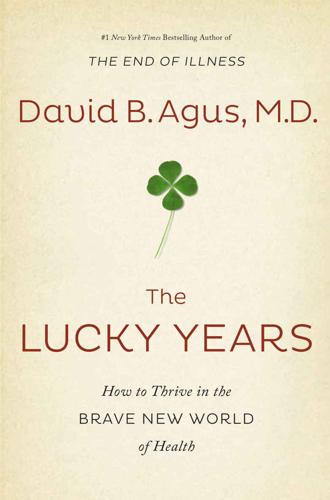
The Lucky Years: How to Thrive in the Brave New World of Health
by
David B. Agus
Published 29 Dec 2015
At the same time, we also need society to continually and speedily build the framework and allocate resources to enable further changes to occur. I hope this book will help us all do just that. New technologies and constantly emerging data have produced the age of precision medicine, sometimes called personalized medicine. But precision medicine is still stuck in treatment mode—it’s being used primarily to learn how to treat your condition precisely once you have it. It hasn’t moved into the realm of prevention. However, it will, and it will shed the imperfections that distort the field today. For example, a major 2015 report published in the New England Journal of Medicine, one of the best, most respected medical journals in the world, warns that DNA testing results can be dramatically flawed.14 These genetic analyses that profile your DNA are supposed to assess risk for numerous ailments including cancer, heart conditions, and Alzheimer’s disease.
…
My clinic, for example, and eleven others across the country have teamed up with the IBM supercomputer known as Watson, which is being trained to analyze the genetic data from a patient’s cancer and search the scientific literature to help guide treatments for this patient. As the artificial-intelligence, “cognitive” computer gets more information and learns about matching patients to treatments, Watson helps us realize the goal of truly personalized medicine. The Washington Post summarized the hope perfectly: “And best of all, Watson will continue to learn on the job as it hunts for appropriate oncology treatments. That means that Watson will gain in value and knowledge over time, based on previous interactions with medical practitioners. The more that participating institutions use Watson to assist clinicians in identifying cancer-causing mutations, the more that Watson’s rationale and insights will improve.”5 At one time, we were afraid to have our financial info online or use a computer to transfer money and store our financial data.
…
But this approach is far from new. From Charaka, the father of ancient Indian practices (Ayurveda) to Hippocrates, the first father of modern medicine, many doctors throughout history have practiced the personalized approach to some degree using available technology for treating a disease. Today, however, personalized medicine is much more precise from a molecular standpoint. It focuses chiefly on DNA and how single-nucleotide polymorphisms (SNPs) and environmental factors influence an individual’s biology and risk for disease. SNPs are variations in DNA sequences that are thought to provide the genetic markers for our response to disease and drugs.
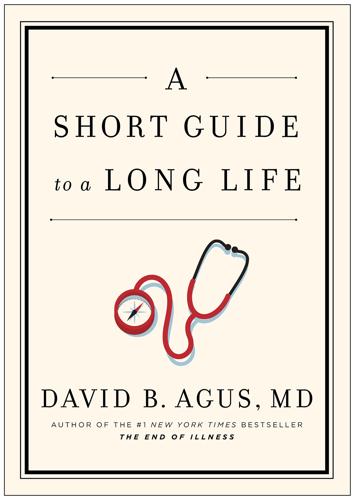
A Short Guide to a Long Life
by
David B. Agus
Published 7 Jan 2014
You can buy or access equipment to take your blood pressure at most pharmacies, and some tools can even be downloaded as an application for your smart phone (see Rule 2). I’m a big believer in what’s called personalized medicine, which means customizing your health care to your specific needs based on your physiology, genetics, value system, and individual circumstances. Medicine is finally at a place where we have the technology to tailor treatment and preventive protocols to an individual, just like a seamstress can tailor a garment to a person’s body. But it all begins with you. You won’t be able to enjoy the benefits of personalized medicine until you take a close look at your unique body. Below is a list of general questions to ask yourself during your personal checkup every couple of months after you’ve completed the intense three-month initiation diary:1 • How would you rank your overall energy levels?
…
Agus is a professor of medicine and engineering at the University of Southern California Keck School of Medicine and Viterbi School of Engineering and heads USC’s Westside Cancer Center and the Center for Applied Molecular Medicine. He is one of the world’s leading cancer doctors, and the cofounder of two pioneering personalized medicine companies, Navigenics and Applied Proteomics. Dr. Agus is an international leader in new technologies and approaches for personalized health care and a contributor to CBS News. His first book, The End of Illness, became a New York Times #1 bestseller and was also the subject of a PBS special.

The Driver in the Driverless Car: How Our Technology Choices Will Create the Future
by
Vivek Wadhwa
and
Alex Salkever
Published 2 Apr 2017
We will as consumers have unprecedented insights into and power to control our own health care. And augmenting our bodies and our minds will be possible by a plethora of biological and mechanical means unimaginable just a decade ago—if we choose to make such augmentations available. The Waistline and the New Paradigm for Personalized Medicine A good way to begin this chapter and our quick tour of the new frontiers in medicine is with something familiar, in particular, our waistlines. I love to eat. After my heart attack, though, I started watching my diet very closely. And I learned that perhaps the gravest health problem facing the global population is this disease of abundance called obesity.
…
These include not just our diets and our genes but also how our metabolisms fluctuate, the diversity of the bacteria living in our guts, and our environments—most evidently, what chemicals are in the air we breathe, the water we drink, and the food we consume. With this preliminary knowledge, we are starting to put in place a true system for personalized medicine. The cost of sequencing a human genome is now around $1,000 and should be below $100 within five years. Within a decade, it will cost less than getting a latte at Starbucks, less than reading the Sunday New York Times. But, to view it through this section’s filter, will these breakthroughs equally benefit all, or will they merely buttress existing disparities in health and wellness between rich and poor?
…
And the same rigorous data-based analysis could be applied not only to ways to make us healthier but also to problems in the medical system that result in needless pain, suffering, and deaths. From these insights will come ways to make even the most intimate medical procedures more highly automated and safe. Does the Technology Foster Autonomy Rather Than Dependence? I have given you a grand tour of the future of health care and personalized medicine and shown you the depth and breadth of its advances. The fact is that medicine is becoming an information technology and advancing at an exponential rate. We have become data, and our doctors are becoming software. And entrepreneurs all over the world are leading the charge. The key question now is whether this future will benefit all equally.
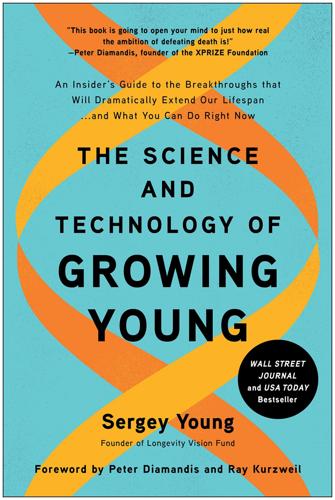
The Science and Technology of Growing Young: An Insider's Guide to the Breakthroughs That Will Dramatically Extend Our Lifespan . . . And What You Can Do Right Now
by
Sergey Young
Published 23 Aug 2021
The I-PREDICT team of radiologists, oncologists, geneticists, pharmacologists, and bioinformatics experts pool knowledge from each of their fields to arrive at drug combinations that are precisely tuned to the individual patient’s genetic presentation. Of seventy-three patients who were treated using this pharmacogenetic approach, those who received more precise treatments matched to their genomic alterations fared twice as well as those who did not.2 This is precision medicine (PM), sometimes called personalized medicine or predictive medicine, and it is about to completely transform every single aspect of health care. The core premise of PM is to use each individual’s unique biodata to predict, prevent, and treat illness with previously unthinkable certainty. It is as if doctors have been putting together a jigsaw puzzle under dim light, forced to figure out which piece to select by groping its contours.
…
“Not all drugs or common doses work for all individuals,” reads Intellimedicine’s mission statement. “Differences in weight, age, activity, and diet . . . dramatically impact drug dosing and selection.”8 In the Near Horizon of Longevity, the ability to take control of your own health with personalized medicine will be available on demand. Already, Boston- and Singapore-based Biofourmis, for example, offers a service to health-care providers that uses wearable biosensors and machine learning to predict and prevent patient disease exacerbation, and to monitor whether or not treatments are working.
…
In an unprecedented move in 2017, drug maker Amgen began offering a full, money-back guarantee for its cholesterol treatment Repatha to any payers who have a heart attack or stroke while using the medicine.39 We’ve been approaching health care the wrong way until now, not because we are stupid or callous but because it was the only way we had. But soon, deeply personalized medicine will create better health outcomes, greater productivity, lower health costs, higher GDP, reduced government social program expenses, and more opportunities for pharmaceutical companies. It is one thing to know that eating healthy, exercising, and drinking in moderation are good for you. It’s something entirely different to see the results that those choices produce on your device display, right as you are making them.

100 Plus: How the Coming Age of Longevity Will Change Everything, From Careers and Relationships to Family And
by
Sonia Arrison
Published 22 Aug 2011
It took only sixteen years, however, for one-quarter of American households to get a personal computer, thirteen years for a cell phone, and seven years for Internet access, a promising trend for those who wish to see the widespread use of longevity technologies because health technologies are fast becoming information technologies.44 As we learned in Chapter 2, genomics, which will help usher in personalized medicine, already shows positive signs because costs are dropping at lightning speeds. “Biotech has gone exponential, like Moore’s law,” notes Andrew Hessel, a well-known synthetic biologist and cofounder of the Pink Army Cooperative, the world’s first cooperative biotechnology company. 45 At the time of the writing of this book, advances in biotech were moving faster than Moore’s law, according to which the number of transistors on an integrated circuit doubles approximately every two years.
…
Connected to the cause by Diamandis, both Hawking and King act as salespeople for the cause.28 For instance, Hawking says, “You may know that I am suffering from what is known as Amyotrophic Lateral Sclerosis (ALS), or Lou Gehrig’s Disease, which is thought to have a genetic component to its origin. It is for this reason that I am a supporter of the $10M Archon Genomics X PRIZE to drive rapid human genome sequencing. This prize and the resulting technology can help bring about an era of personalized medicine.”29 Larry King goes straight to the point when he asks, “What if we could learn how to stop heart disease from happening? What if we were able to reduce a person’s likelihood of cardiovascular disease based on his or her genetic profile, as well as on the individual’s age, gender, and lifestyle?”
…
Kim, who is a well-known aging expert and one of Larry Ellison’s award recipients.68 Sergey Brin is spreading the meme in a more personal way. 23andMe is a genomics company that was cofounded by Brin’s biologist wife, Anne Wojcicki, and has gone a long way toward popularizing the idea of personalized medicine. “Spit parties” are one of the cute marketing techniques the company uses to get the public interested in thinking about their DNA and how it might be fixed to cure disease. One high-profile party took place during New York City’s Fashion Week. Company staffers recounted the event on their blog, saying, “23andMe managed to lure a few hundred people away from the catwalks Tuesday night to consider the beauty that lies within—DNA.

Predictive Analytics: The Power to Predict Who Will Click, Buy, Lie, or Die
by
Eric Siegel
Published 19 Feb 2013
In so doing, might such scientifically based, individualized economic policies help resolve the crippling government deadlock that results from the opposing fiscal ideologies currently held by conservative and liberal policymakers? Personalized medicine. While one medical treatment may deliver better results on average than another, this one-size-fits-all approach commonly implemented by clinical studies means treatment decisions that help many may in fact hurt some. In this way, healthcare decisions backfire on occasion, exerting influence opposite to that intended: they hurt or kill—although they kill fewer than following no clinical studies at all. Personalized medicine aims to predict which treatment is best suited for each patient, employing analytical methods to predict treatment impact (i.e., medical influence) similar to the uplift modeling techniques used for marketing treatment decisions.
…
Revenue from interest payments and savings from fewer defaults Electoral politics Should we market to the constituent/in the state (swing voter/swing state)? Positive votes resulting from political election campaigns (see this chapter’s sidebar for how Obama’s 2012 campaign employed uplift modeling) Sociology Should we provide benefits to this individual? Improved social program outcome: long-term self-sufficiency Personalized medicine Which medical treatment should the patient receive? Favorable patient outcome in clinical healthcare This chapter covers in detail the first two areas in the table above. Here’s a bit more about the rest of them (note that for some of these application areas, no public case studies or proofs of concept yet exist—uplift modeling is an emerging technology).
…
Measuring impact in sociology: James J. Heckman and Richard Robb Jr., “Alternative Methods for Evaluating the Impact of Interventions: An Overview,” Journal of Econometrics 30, issues 1–2 (October–November 1985): 239–267. http://faculty.smu.edu/millimet/classes/eco7377/papers/heckman%20robb.pdf. Personalized medicine: Brian Claggett, Lihui Zhao, Lu Tian, Davide Castagno, and L. J. Wei, “Estimating Subject-Specific Treatment Differences for Risk-Benefit Assessment with Competing Risk Event-Time Data,” Harvard University Biostatistics Working Paper Series, Working Paper 125, March 2011. biostats.bepress.com/harvardbiostat/paper125.
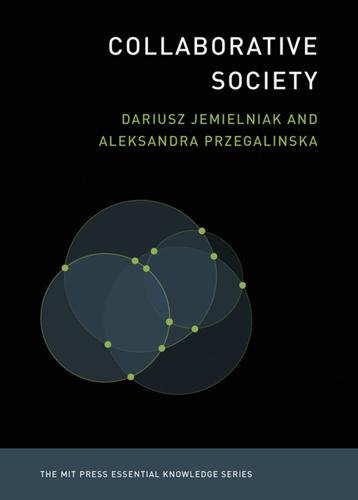
Collaborative Society
by
Dariusz Jemielniak
and
Aleksandra Przegalinska
Published 18 Feb 2020
Narayanan, “Routes for Breaching and Protecting Genetic Privacy,” Nature Reviews Genetic 15 (2014): 409–421. 26. https://perma.cc/7KTH-JFLG 27. R. Cooter, “Biocitizenship,” Lancet 372 (2008): 1725. 28. M. Swan, “Health 2050: The Realization of Personalized Medicine through Crowdsourcing, the Quantified Self, and the Participatory Biocitizen,” Journal of Personal Medicine 2 (2012): 93–118. 29. M. Foucault, Society Must Be Defended: Lectures at the Collège de France, 1975–76, trans. David Macey (Picador, 2003). 30. D. Lupton, The Quantified Self (John Wiley & Sons, 2016). 31. https://perma.cc/FY5V-KTBA 32. https://perma.cc/K5EJ-JFLD 33. https://perma.cc/WRE6-RQV6 34. https://perma.cc/GP5L-4R94 35.
…
Linthorst, “‘Doctor Google’ Ending the Diagnostic Odyssey in Lysosomal Storage Disorders: Parents Using Internet Search Engines as an Efficient Diagnostic Strategy in Rare Diseases,” Archives of Disease in Childhood 95 (2010): 642–644. 18. W. E. Bijker, E. Bal, and R. Hendriks, The Paradox of Scientific Authority: The Role of Scientific Advice in Democracies (MIT Press, 2009). 19. D. M. Bowman, N. Woodbury, and E. Fisher, “Decoupling Knowledge and Expertise in Personalized Medicine: Who Will Fill the Gap?” Expert Review of Precision Medicine and Drug Development 1 (2016): 345–347. 20. F. Godlee, J. Smith, and H. Marcovitch, “Wakefield’s Article Linking MMR Vaccine and Autism was Fraudulent,” British Medical Journal 342 (2011), c7452. 21. M. Callon, and V. Rabeharisoa, “Research ‘in the Wild’ and the Shaping of New Social Identities,” Technology in Society 25 (2003): 193–204. 22.
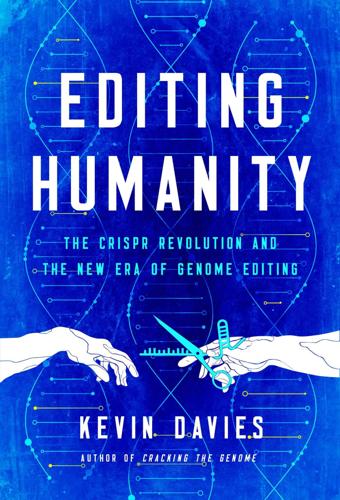
Editing Humanity: The CRISPR Revolution and the New Era of Genome Editing
by
Kevin Davies
Published 5 Oct 2020
The identification of the genes mutated in patients with CF, DMD, and other disorders gave us hope that cures were just around the corner. “From gene to drug” and “From bench to bedside” were the memes of the day, heralding a revolution in molecular medicine. Every few years the future of medicine would get a new name—personalized medicine, precision, genomic, or individualized medicine, as if changing the name would change fortunes. In 1990—the year of the launch of the HGP—I hung up my lab coat for the last time. My personal eureka moment came when I chanced upon a classified advertisement for a job with Nature magazine. Well, I thought, that’s one way to get my name in the pages of the world’s most famous science journal.
…
“Let them say we’re playing God.”4 Debates over ethics and eugenics, hyperagency and human flourishing are all well and good. But patients just want a chance for a normal, healthy life. If modern science offers them hope, who is going to dare take that away? Indeed, there are signs of hope as we enter a new era of hyper-personalized medicine, where patients with ultra-rare gene mutations can receive a customized therapy with FDA approval. At Boston Children’s Hospital, pediatric neurologist Tim Yu has developed bespoke drugs for children with Batten disease5 and ataxia telangiectasia.6 Yu has also advised a group including Yale University’s Monkol Lek to devise a custom CRISPR therapy for Terry Horgan, a 24-year-old patient with Duchenne muscular dystrophy.
…
At Boston Children’s Hospital, pediatric neurologist Tim Yu has developed bespoke drugs for children with Batten disease5 and ataxia telangiectasia.6 Yu has also advised a group including Yale University’s Monkol Lek to devise a custom CRISPR therapy for Terry Horgan, a 24-year-old patient with Duchenne muscular dystrophy. Horgan’s mutation is in the first exon of the dystrophin gene, not part of the group of mutations addressed by drugs currently on the market or in the clinic. Terry’s brother Rich is the founder of Cure Rare Disease, a nonprofit spearheading hyper-personalized medicine. Encouraging, but each of these personalized drugs requires about $1–2 million at a minimum. * * * Like many researchers in the CRISPR spotlight, Jennifer Doudna receives regular emails from patients and their family members, desperately looking for hope. One message (shared publicly by Urnov) was written by a thirty-six-year-old woman whose cheerful salutation—“Hi Dr.
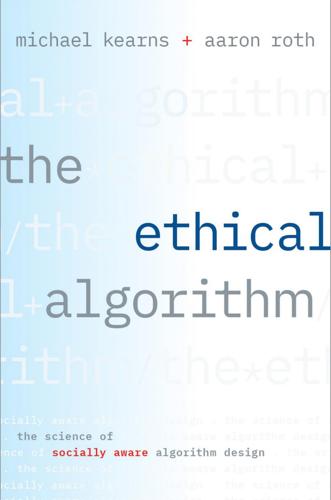
The Ethical Algorithm: The Science of Socially Aware Algorithm Design
by
Michael Kearns
and
Aaron Roth
Published 3 Oct 2019
Self-Driving Morality As important as fairness, privacy, and interpretability are, we usually do not consider violations of them to be an immediate threat to our health and physical safety (although they can be in areas like criminal justice). But as algorithms come to play central roles in areas such as self-driving cars, personalized medicine, and automated warfare and weaponry, we are inevitably confronted with issues of algorithmic safety, morality, and accountability. While these are topics are being actively discussed in both scientific circles and the mainstream media, there is even less technical progress on them than there is on transparency.
…
Technology companies such as Google and Facebook of course rely on products powered by machine learning for much of their revenue—but as these techniques grow in applicability, their scope and societal benefits grow as well. Rather than simply improving the click-through rate of targeted advertising, if learning procedures can improve the accuracy and efficacy of personalized medicine, they can potentially save lives. If they can predict creditworthiness from a broader set of indicators than just traditional measures such as income, savings, and credit card history, they can expand access to credit to a broader population. Realistic examples of this potential are endless.
…
See also societal norms and values nuclear weapons, 180–81 online shopping algorithms, 116–21, 123–24 Open Science Foundation, 161 optimization and algorithmic violations of fairness and privacy, 96 and data collection bias, 90 and definitions of fairness, 70–72 and differential privacy, 44–45 and echo chamber equilibrium, 125 and equilibrium in game theory, 98–99 and “fairness gerrymandering,” 87 and fairness vs. accuracy, 75–83 and interpretability of model outputs, 174–75 “Maxwell solution,” 105–11 and navigation problems, 102–4, 112 and online shopping algorithms, 116, 122 Pareto optimal solutions, 128, 193 and product recommendation algorithms, 123–24 statistical parity vs. optimal decision-making, 72 threat of optimization gone awry, 179–88 and unintended results, 189–90 and unique challenges of algorithms, 10 outcome trees, 140 outliers, 122 overfitting data, 31, 136, 159, 167 pairwise correlations, 57–58 parable on machine learning pitfalls, 182–83 Pareto, Vilfredo, 81 Pareto frontier (Pareto curves), 63, 81–86, 89, 128, 193 parity, statistical, 84 Partnership on AI to Benefit People and Society, 15 patient records. See medical records and data Pentland, Sandy, 145–46 performance reporting, 140–41 personal data, 171 personalized medicine, 191–92 p-hacking, 144–46, 153–59, 161, 169–70. See also adaptive data analysis phone apps, 2 physiology research, 141–43 plausible deniability, 41 policy, 82–84 political affiliation data, 25–26, 51–52 political bias, 14–15 portfolio management, 81 post hoc rationalization, 191. See also adaptive data analysis “power pose” research, 141–42, 157–58 precise specification goal and adaptive data analysis, 160, 164 and algorithmic morality, 175–76 and design of ethical algorithms, 4, 190–94 and differential privacy, 36–37 and theoretical computer science field, 12 and threat of optimization gone awry, 181–82 prediction and dangers of adaptive data analysis, 152, 155 design of ethical algorithms, 193 and differing notions of fairness, 85 and fairness vs. accuracy of models, 77 and “merit” in algorithmic fairness, 74 “predictive policing,” 92–93 and scope of topics covered, 18–19 and statistical parity, 71 preferences, 116, 136 preregistration of scientific studies, 160–62 The Preregistration Revolution (Nosek), 160 priming studies, 142–43, 158 principled algorithms, 174 Prisoner’s Dilemma, 99–100 privacy and algorithmic morality, 175–77 and algorithms as regulatory measure, 16–18 and concerns about algorithm use, 3 and correlation equilibrium, 114–15 and current state of ethics research, 169–70 and dating apps, 96 and design of algorithms, 5 and design of ethical algorithms, 192–95 and differential privacy, 40, 42–45 and goals of ethics research, 171 and medical research, 34–36 and movie recommendation algorithms, 36–37 parameters, 37–38 and recent efforts to address machine learning issues, 14–15 and scope of topics covered, 18–21 and shortcomings of anonymization methods, 24 and theoretical computer science field, 12–14 and threat of optimization gone awry, 184–85 and unique challenges of algorithms, 7, 10 and weaknesses of aggregate data, 30 and weaknesses of encryption, 33–34 product ratings, 118–23 programming languages, 6 proliferation of algorithms, 3 proxy data, 67 pseudocode, 9–10 publication incentives, 136 publicly available data, 51 public transportation, 112 publishing pressures, 144–45 p-values, 138–39, 141 Pynchon, Thomas, 117–18 quadratic time algorithms, 4–5 quantitative properties of algorithms, 194.
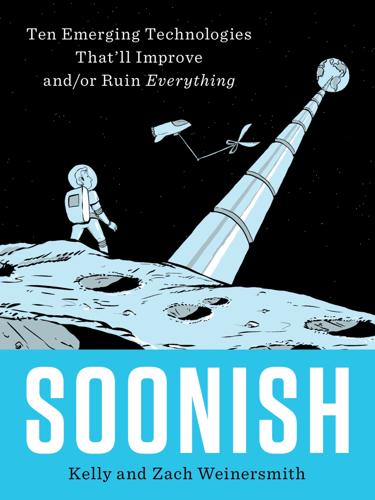
Soonish: Ten Emerging Technologies That'll Improve And/or Ruin Everything
by
Kelly Weinersmith
and
Zach Weinersmith
Published 16 Oct 2017
A., Tibbits, S., and Garrett, B. “The Next Wave: 4D Printing—Programming the Material World.” Atlantic Council. May 2014. atlanticcouncil.org/images/publications/The_Next_Wave_4D_Printing_Programming_the_Material_World.pdf. Carini, C., Menon S. M., and Chang, M. Clinical and Statistical Considerations in Personalized Medicine. London: Chapman and Hall/CRC, 2014. Carney, Scott. The Red Market: On the Trail of the World’s Organ Brokers, Bone Thieves, Blood Farmers, and Child Traffickers. New York: William Morrow, 2011. Centers for Disease Control and Prevention. “CDC Media Statement on Newly Discovered Smallpox Specimens.”
…
Understanding Augmented Reality: Concepts and Applications. Amsterdam: Morgan Kaufmann, 2013. Craven, B. A., Paterson, E. G., and Settles, G. S. “The Fluid Dynamics of Canine Olfaction: Unique Nasal Airflow Patterns As an Explanation of Macrosmia.” Journal of the Royal Society Interface 7, no. 47 (2010):933–43. Cullis, Pieter. The Personalized Medicine Revolution: How Diagnosing and Treating Disease Are About to Change Forever. Vancouver: Greystone Books, 2015. Daniels, K.E. “Rubble-Pile Near Earth Objects: Insights from Granular Physics.” In Asteroids, edited by V. Badescu, 271–86. Berlin and Heidelberg: Springer, 2013. DAQRI. “Smart Helmet.” 2016. http://daqri.com/home/product/daqri-smart-helmet.
…
“Space Elevator Home.” 2016. isec.org. ITER. “The Way to New Energy.” 2016. iter.org. Jafarpour, F., Biancalani, T., and Goldenfeld, N. “Noise-Induced Mechanism for Biological Homochirality of Early Life Self-Replicators.” Physical Review Letters 115, no. 15 (2015):158101. Jain, Kewal K. Textbook of Personalized Medicine. New York: Humana Press, 2015. JAXA. “3-2-2-1 Settlement of Claim between Canada and the Union of Soviet Socialist Republics for Damage Caused by Cosmos 954.’” Japan Aerospace Exploration Agency. Released on April 2, 1981. www.jaxa.jp/library/space_law/chapter_3/3-2-2-1_e.html. Jella, S.

As the Future Catches You: How Genomics & Other Forces Are Changing Your Work, Health & Wealth
by
Juan Enriquez
Published 15 Feb 2001
Then Milton Wright went home to care for his two children … Wilbur and Orville … Bicycle mechanics … Who used “Pride of the West” ladies’ underwear cloth … To cover the wings … Of the world’s first airplane.11 Gene chips will lead to personalized medicine … You will be able to test whether one medicine or another works better for you … Before you take it. You cannot do that today … Which is why when you buy a drug … And open the box … The first thing you get … Is a long list of the ways in which … The prescription you paid for … May hurt you.12 (I.e., this medicine may cause bleeding, cramps, dry mouth, impotence, insomnia, irritability, nausea, and other fun stuff.) Thalidomide is one example of highly personalized medicine … Few images are as devastating as the pictures of deformed children published in Life … Caused by prescribing a “safe sedative” to pregnant women.
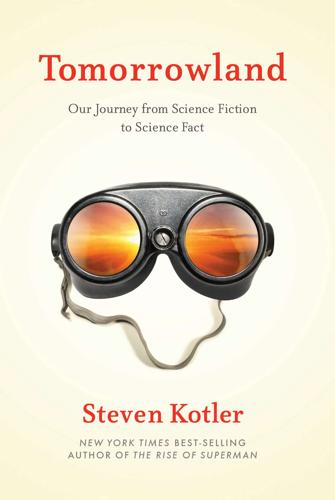
Tomorrowland: Our Journey From Science Fiction to Science Fact
by
Steven Kotler
Published 11 May 2015
Now, because of advances in genetics, we know that each cancer is unique, and research is shifting to the development of personalized medicines — designer therapies that can exterminate specific cancerous cells in a specific way, in a specific person. Forget collateral damage, these therapies are focused like lasers. The Finnish pharmaceutical Oncos Therapuetics has treated over two hundred patients using just such methods. But it wouldn’t take much at all to subvert them, turning personalized medicines into personalized weapons. In the coming years, criminals will doubtless dedicate significant resources to exploiting these biological advances, just as they’ve exploited a panoply of earlier technologies.
…
. — are now advancing along exponential growth curves. Consider genomic sequencing, long touted as the “essential tool” needed to move medicine from standardized and reactive to personalized and preventative. In 1990, when the Human Genome Project was first announced, the cost of this tool was budgeted at $3 billion — about as far from personalized medicine as one can get. But by 2001, costs were down to $300 million. By 2010, they were below $5,000. In 2012, the $1,000 barrier had fallen. Within ten years, at the current rate of decline, a fully sequenced human genome will price out at less than $10. If standardized and reactive medicine managed to double human life span in a century, just imagine how far personalized and preventative medicine might extend that total.

Big Data and the Welfare State: How the Information Revolution Threatens Social Solidarity
by
Torben Iversen
and
Philipp Rehm
Published 18 May 2022
European Journal of Epidemiology 28(6): 453– 62. Pei, Zhuan, David S. Lee, David Card, and Andrea Weber. 2021. “Local Polynomial Order in Regression Discontinuity Designs.” Journal of Business & Economic Statistics. Personalized Medicine Coalition. 2016. “Personalized Medicine by the Numbers.” www.personalizedmedicinecoalition.org/Userfiles/PMC-Corpor ate/file/pmc_personalized_medicine_by_the_numbers.pdf. Pierson, Paul. 2000. “Increasing Returns, Path Dependence, and the Study of Politics.” American Political Science Review 94(2): 251–67. Platteau, Jean-Philippe. 1991. Traditional Systems of Social Security and Hunger Insurance: Past Achievements and Modern Challenges.
…
In fact, according to the National Human Genome Research Institute, the cost of sequencing the human genome has been falling much faster than implied by Moore’s Law.5 If a complete sequencing of the gene is not required, a company such as 23andMe can provide a pretty comprehensive genotyping of individuals for less than US$200,6 though the accuracy of consumer genomics products still leaves much to be desired. Gene-based diagnostics and treatment are in their infancy but progressing fast. The number of available personalized gene-based diagnostics and treatments approved by the Food and Drug Administration (FDA) in the USA rose from 13 in 2006 to 113 in 2014 (Personalized Medicine Coalition 2016), and it continued to climb sharply, reaching 184 in 2019. The number of standard tests on a simple penetration blood sample increased from 130 in 1992 to 319 in 2014 (Pagana and Pagana 1992; Pagana, Pagana, and Pagana 2014). Perhaps more tellingly, all the leading technology companies – Alphabet, Amazon, Apple, IBM, Microsoft, and so on – have committed huge resources to developing a new data-based health industry that draws on large databases stored in the cloud.
…
AI-enabled machine learning is used to make sense of the data for diagnostic purposes, which are of course also highly relevant for underwriting. One of the sources of data is independent laboratories, which have greatly proliferated over time, and these data can be combined with other health data to produce detailed profiles of individual health parameters with enormous predictive power. The promise of “personalized medicine” is based on such individual information, and former US President Obama’s Precision Medicine Initiative reads like an impassioned call for more data on people’s underlying health risks – “including their genome sequence, microbiome composition, health history, lifestyle, and diet.” As AI crunches the numbers, unexpected predictors of health and mortality may turn up as well.
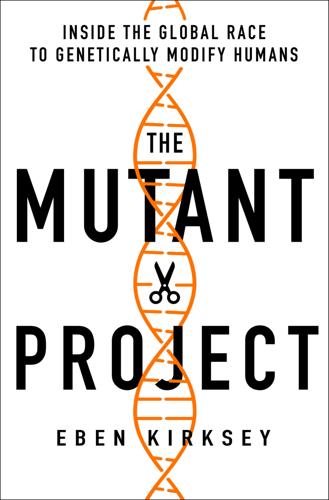
The Mutant Project: Inside the Global Race to Genetically Modify Humans
by
Eben Kirksey
Published 10 Nov 2020
* * * As I talked with Carl June about his latest research—the first CRISPR experiment approved in the United States—I came to realize that gene editing was the least interesting part of the story. The new study aimed to develop a cancer cure by improving the design of CAR T cells—a living therapy on the frontier of personalized medicine. The special T cells that treated Nicholas Wilkins and others in the hall of fame were genetically modified to have chimeric antigen receptors (CARs) on their surface. The chimera of Greek mythology was a fire-breathing monster with a lion’s head, a goat’s body, and a serpent’s tail. The chimeric receptors on the T cells were simply a synthetic collection of different molecular parts that had been designed to target particular kinds of cancer.
…
“So if this really turns out to be an amazing thing, treating all kinds of diseases … how will there be enough people working in labs to do this? With enough time?” As Siegel concluded the tour, he recounted all of the work that went into producing custom treatments for each of these patients. “Everywhere you go now, people are talking about personalized medicine,” Siegel continued. “We are already taking cells out of people, modifying them in some way, and then putting them back in. But these cells will only work in that person.” Producing these genetically modified cells is very time-intensive and costly. “You have to collect the cells, you have to then manufacture the cell therapy, which at this point takes more than a week,” said Siegel.
…
“You have to collect the cells, you have to then manufacture the cell therapy, which at this point takes more than a week,” said Siegel. “Then you have to do all kinds of testing before you can give it to the patient. All of this work has led to one product for one person.” CRISPR could be a technical fix to the problem of unequal access to personalized medicine, according to Siegel. Penn Medicine is trying to develop an immune therapy that could work in masses of cancer patients. Don Siegel dreams of using CRISPR to strip T cells of their individual molecular signature and create universal cells that could work in any patient’s body. This would be the holy grail in the quest to cure cancer.

Blockchain: Blueprint for a New Economy
by
Melanie Swan
Published 22 Jan 2014
The DNAnexus database is not a public good with open access; only 300 worldwide preapproved genomic researchers have permission to use it. The Genomic Data Commons148 is a US-government-funded large-scale data warehouse and computational computing project being assembled to focus on genomic research and personalized medicine. In this case, the resource is said to be available to any US-based researcher. This is a good step forward in organizing data into standard unified repositories and allowing access to a certain population. A further step could be using an appcoin like Genomecoin to expand access on a grander scale as a public good fully accessible by any individual worldwide.
…
Existing Customers Can Access Their Results Here Until January 1st 2015.” http://en.wikipedia.org/wiki/DeCODE_genetics. 143 Castillo, M. “23andMe to Only Provide Ancestry, Raw Genetics Data During FDA Review.” CBS News, December 6, 2013. http://www.cbsnews.com/news/23andme-to-still-provide-ancestry-raw-genetics-data-during-fda-review/. 144 Swan, M. “Health 2050: The Realization of Personalized Medicine Through Crowdsourcing, the Quantified Self, and the Participatory Biocitizen.” J Pers Med 2, no. 3 (2012): 93–118. 145 ———. “Multigenic Condition Risk Assessment in Direct-to-Consumer Genomic Services. Genet Med 12, no. 5 (2010): 279–88; Kido, T. et al. “Systematic Evaluation of Personal Genome Services for Japanese Individuals.”
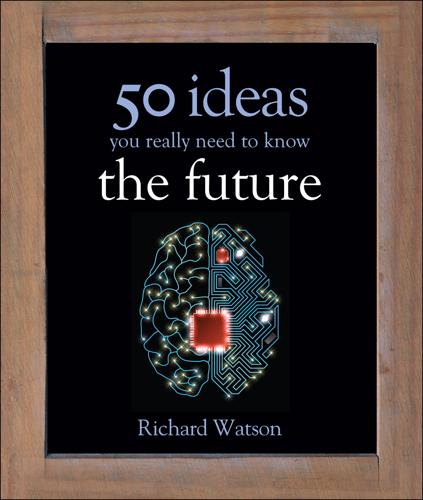
50 Future Ideas You Really Need to Know
by
Richard Watson
Published 5 Nov 2013
Developments in areas such as genomics and personal phenotyping mean that personalized medicine is becoming a reality, and pharmaceutical companies are shifting research and development expenditure toward specialty products and therapies that target niche medical conditions and subpopulations. A 9 million euro, EU-funded project, Food4Me, is being launched to look at all aspects of personalized nutrition—namely how food intake could be tailored to suit each individual’s physical and genetic makeup. Perhaps rather than call it personalized medicine, we should call it personalized health. There’s even a European study on delivering personalized nutrition according to phenotype.
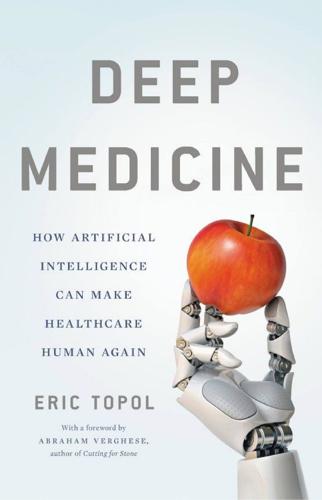
Deep Medicine: How Artificial Intelligence Can Make Healthcare Human Again
by
Eric Topol
Published 1 Jan 2019
With several of these drugs with sales of more than $10 billion per year (such as Humira, Enbrel, Remicade), you can quickly get a sense of the magnitude of waste incurred. FIGURE 2.3: Schematic showing the number of people with clinical responsiveness to top ten drugs by gross sales in 2014. The gray schematic people represent clinical responders, the black nonresponders. Source: Adapted from N. Schork, “Personalized Medicine: Time for One-Person Trials,” Nature (2015): 520(7549), 609–611. These data do not simply illustrate that medicines don’t work or are some kind of profiteering racket. Rather, in most cases these drugs don’t work because physicians have not honed an ability to predict what sort of person will respond to a treatment or acquired adequate knowledge about an individual to know whether the patient is among those people who will respond positively to a treatment.
…
Health systems now have remarkable investment assets, like Kaiser Health with over $40 billion, Ascension Health with more than $17 billion, and Cleveland Clinic with over $9 billion.2 Along with the explosive economic growth of healthcare, the practice of medicine has been progressively dehumanized. Amazingly, ninety years ago, Francis Peabody predicted this would happen: “Hospitals… are apt to deteriorate into dehumanized machines.”3 (Parenthetically, if you read one paper cited in this chapter, this would be the one.) Rather than all the talk of “personalized” medicine, business interests have overtaken medical care. Clinicians are squeezed for maximal productivity and profits. We spend less and less time with patients, and that time is compromised without human-to-human bonding. The medical profession has long been mired in inefficiency, errors, waste, and suboptimal outcomes.
…
Centers for Medicare and Medicaid Services. August 8, 2018. www.cms.gov/. 25. Silverman, E., “Why Did Prescription Drug Spending Hit $374B in the US Last Year? Read This,” Wall Street Journal. 2015; Berkrot, B., “U.S. Prescription Drug Spending as High as $610 Billion by 2021: Report,” Reuters. 2017. 26. Schork, N. J., “Personalized Medicine: Time for One-Person Trials.” Nature, 2015. 520(7549): pp. 609–611. 27. Villarosa, L., “Why America’s Black Mothers and Babies Are in a Life-or-Death Crisis,” New York Times. 2018. CHAPTER 3: MEDICAL DIAGNOSIS 1. Tversky, A., and D. Kahneman, “Judgment Under Uncertainty: Heuristics and Biases.”

The Book of Why: The New Science of Cause and Effect
by
Judea Pearl
and
Dana Mackenzie
Published 1 Mar 2018
Bierut points out one problem with VanderWeele and Christiani’s analysis: they had only one measure of smoking behavior—the number of cigarettes per day. The gene could possibly cause people to inhale more deeply to get a larger dose of nicotine per puff. The Harvard study simply didn’t have data to test this theory. Even if some uncertainty remains, the research on the smoking gene provides a glimpse into the future of personalized medicine. It seems quite clear that in this case the important thing is how the gene and behavior interact. We still don’t know for sure whether the gene changes behavior (as Bierut suggests) or merely interacts with behavior that would have happened anyway (as VanderWeele’s analysis suggests). Nevertheless, we may be able to use genetic status to give people better information about the risks they face.
…
This step of statistical estimation is not trivial when the number of variables is large, and only big-data and modern machine-learning techniques can help us to overcome the curse of dimensionality. Likewise, Big Data and causal inference together play a crucial role in the emerging area of personalized medicine. Here, we seek to make inferences from the past behavior of a set of individuals who are similar in as many characteristics as possible to the individual in question. Causal inference permits us to screen off the irrelevant characteristics and to recruit these individuals from diverse studies, while Big Data allows us to gather enough information about them.
…
So we “break” the model where it comes to A but not B. We should thank the language: I should also mention here that counterfactuals allow us to talk about causality in individual cases: What would have happened to Mr. Smith, who was not vaccinated and died of smallpox, if he had been vaccinated? Such questions, the backbone of personalized medicine, cannot be answered from rung-two information. Yet we can answer: To be more precise, in geometry, undefined terms like “point” and “line” are primitives. The primitive in causal inference is the relation of “listening to,” indicated by an arrow. NOTES TO CHAPTER TWO And now the algebraic magic: For anyone who takes the trouble to read Wright’s paper, let me warn you that he does not compute his path coefficients in grams per day.

Suggestible You: The Curious Science of Your Brain's Ability to Deceive, Transform, and Heal
by
Erik Vance
Published 14 Sep 2016
After 2,000 years as an eccentric medical mystery, placebo effects are starting to take shape out of the fog. But although these tricks work on everyone, they do not work the same for everyone. Some people look at Rosario and see a caring and capable community healer, while others see a scam artist with a handful of basil. Some see homeopathy as a tested and proven form of personalized medicine. Others see water in a fancy vial. Everyone’s door to expectation has a different key, and everyone is suggestible in a slightly different way. But once that door is unlocked, we have access to an amazing power to heal ourselves. For all human history, this bizarre thing—that Hippocrates warned us about, that Avicenna tried to screen out, that Mesmer capitalized on, that Jellinek dismissed, and that obliterated 1,000 modern medicines—was the brain’s own method of self-medication.
…
Most important, if there was ever truly a way to separate placebo responders from the rest of society—either by personality or brain scans or genetics—what would we do with that information? Bar them from all drug trials? If we did that, wouldn’t we have to bar them from taking the drugs that came out of such trials? Placebo research promises to open a path to some of the first truly personalized medicine on Earth. But will that medicine prove an inspiring beacon of inclusion or will it be just another way to classify and exclude people? The placebo effect is an elegant and fascinating phenomenon that beckons us to dig deeper into its mysteries. It is at the same time broadly significant and deeply personal.
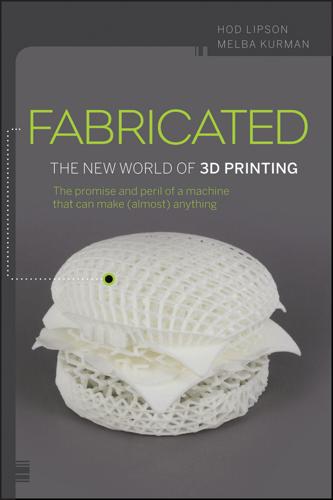
Fabricated: The New World of 3D Printing
by
Hod Lipson
and
Melba Kurman
Published 20 Nov 2012
Advances in traditional design software, medical imaging and data analysis will pave the way for 3D printing replacement parts for living creatures. But will we soon see commercial design software for body parts? Not yet. But we’re inching closer every year. “I’m seeing a convergence between the world of simulation software, medical imaging, and CAD systems.” Chris joked, “It will personalize medicine for us, which is good if you plan to need extra body parts in the future.” In industrial product design, designers are learning that as their design tools improve, nature becomes an increasingly useful source of inspiration. In body design, it will be the same. Living creatures are the product of millions of years of ruthless, iterative design cycles.
…
Surgical models also help surgeons communicate surgical procedures to the patient’s families. Veterinarians practice an upcoming hip surgery for a dog using 3D printed surgical models of the dog’s bones. 3D printed surgical models and inanimate prosthetic body parts are just the beginning. Bioprinting will take personalized medicine to new heights. In the meantime, medical researchers and technologists face a broad array of barriers, from technological to biological to social to regulatory. Our bodies are composed of thousands of different sorts of materials and today’s 3D printers can print just a few materials at a time.

The Big Nine: How the Tech Titans and Their Thinking Machines Could Warp Humanity
by
Amy Webb
Published 5 Mar 2019
Another variety of nanobot, propelled by gas bubbles, can deliver microscopic amounts of medicine without causing injury. The advent of commercially available nanobots, which share information with our PDRs, have replaced one-size-fits-most medications and therapies, treating our specific ailments without causing side effects. Now that both Amazon and Apple are offering personalized medicine, most people have willingly injected themselves with organic nanobots. Even Amazon families have access through a subsidized program approved by the US government. Nanobots continually monitor and treat us, so the life expectancy for average Americans shot from 76.1 years in 2019 up to 99.7 years today.6 It didn’t take long for us to see the potential drawbacks of injectable AGI.
…
Government Coalition, 228; gender-nonconforming people and false accusations of identity theft, 222; Google Blue households, 217, 219, 225; Google Green households, 217, 219, 224, 225; Google households, 216–217, 218; Google Yellow households, 217, 219, 225; health and wellness minders, 219; health data open access, 209; healthcare, 224–226; high-tech brothels with AI-powered sexbots, 219–220; home AI kitchen appliance glitches, 214–215; ignoring AI’s developmental track, 207; intermarriage among Amazon, Apple, and Google households, 220; job displacement, 220; lack of AI education among government leaders, 211; life expectancy, 225; nanobot-induced abortions, 225; nanobot-induced deaths, 225–226; nanobot health monitoring and treatment, 224–226; OmniVision smart glasses, 221; Organization Data Records, 226; PDR as social credit score, 209; PDRs, 208–209, 218, 226; personalized medicine, 224; rising numbers of AI accidents and mistakes, 208; self-driving taxi services and Amazon riders, 218–219; self-driving taxi services and Google riders, 219; transparency among G-MAFIA, 208; 2049, 223–228; 2069, 228–229; 2029, 214–223; U.S. economic and diplomatic actions against China, 227; U.S. government ignoring China’s AI infrastructure and economy, 210–211; unemployment, 226.
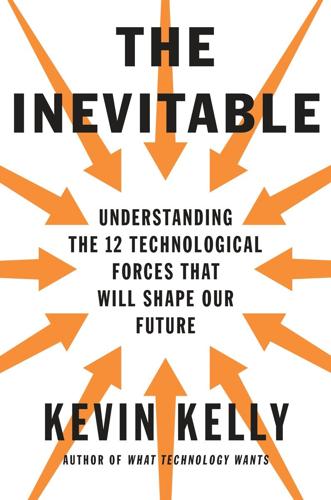
The Inevitable: Understanding the 12 Technological Forces That Will Shape Our Future
by
Kevin Kelly
Published 6 Jun 2016
During the day my biological vitals are tracked with wearable sensors so that the effect of the medicine is measured hourly and then sent to the cloud for analysis. The next day the dosage of the medicines is adjusted based on the past 24-hour results and a new personalized pill produced. Repeat every day thereafter. This appliance, manufactured in the millions, produces mass personalized medicine. My personal avatar is stored online, accessible to any retailer. It holds the exact measurements of every part and curve of my body. Even if I go to a physical retail store, I still try on each item in a virtual dressing room before I go because stores carry only the most basic colors and designs.
…
But with long-term self-tracking, you’d arrive at a very personal baseline—your normal—which becomes invaluable when you are not feeling well, or when you want to experiment. The achievable dream in the near future is to use this very personal database of your body’s record (including your full sequence of genes) to construct personal treatments and personalized medicines. Science would use your life’s log to generate treatments specifically for you. For instance, a smart personalized pill-making machine in your home (described in Chapter 7) would compound medicines in the exact proportions for your current bodily need. If the treatment in the morning eased the symptoms, the dosage in the evening would be adjusted by the system.

The Human Age: The World Shaped by Us
by
Diane Ackerman
Published 9 Sep 2014
“It’s forever going to transform the way we understand genetics, environment, the way the two interact, what causes disease. It’s another level of biology, which for the first time really is up to the task of explaining the biological complexity of life.” “The Human Genome Project was supposed to usher in a new era of personalized medicine,” Mehler told the American Academy of Neurology at its annual meeting in 2011. “Instead, it alerted us to the presence of a second, more sophisticated genome that needed to be studied.” Despite the DNA of twins, for example, they’re never perfect matches. If one has schizophrenia, the odds of her twin developing it are only 50 percent, not 100 percent as one might assume since they have identical genes.
…
Researchers are thinking of cobbling them into infant formula to help ward off asthma, allergies, and such autoimmune triggermen as diabetes, eczema, and multiple sclerosis. Babies pick up other useful bacteria in Mom’s dirt-and-crumb-garlanded home and landscape. At least, they should. Doctors are embracing the idea of personalized medicine based on a patient’s uniquely acquired flora and fauna, as revealed in his or her genome, epigenome, and microbiome. No more antibiotics prescribed by the jeroboam on the off chance they might prove useful. Instead, try unleashing enough beneficial bacteria to crowd out the pathogen. No more protecting children from the hefty stash of derring-do white-knight bacteria they need but we’ve learned to regard as icky.
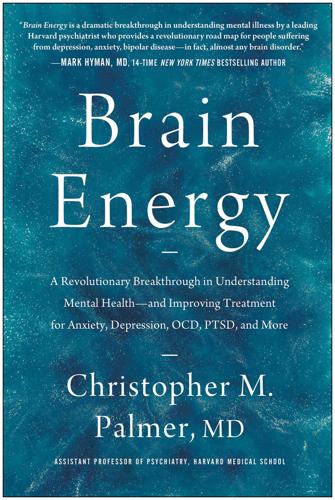
Brain Energy: A Revolutionary Breakthrough in Understanding Mental Health--And Improving Treatment for Anxiety, Depression, OCD, PTSD, and More
by
Christopher M. Palmer Md
Published 15 Nov 2022
They are much more appealing than doing the complicated work of figuring out what’s actually wrong, and then correcting the problem or problems, which might include making lifestyle changes. In reality, the simplistic fixes usually don’t work, at least not fully or permanently. The skyrocketing rates of mental and metabolic disorders are a clear testament to the failure of this approach. The field of medicine is increasingly recognizing this with its push toward personalized medicine, which acknowledges that there are many pathways to illness and that one-size-fits-all solutions often don’t work. People need unique treatment plans tailored to their individual situations and requirements. Working with a Clinician When treating serious mental disorders, it’s critically important that you work with a competent clinician.
…
organic overlapping symptoms of people meeting criteria for prevalence of risk factors for “serious,” signs of stigma attached to symptoms of theories of treatments for (see also treatments for mental disorders) mental states and inflammation and mental disorders normal physical model of metabolic disorders. see also specific disorders in causing mental illness contributing causes of effects of interventions for as energy imbalances and epilepsy increasing rates of and mental disorders (see also relationships of medical and mental disorders) mental disorders as (see also brain energy theory) and metabolic ripple effect metabolic syndrome in and metabolism mitochondrial dysfunction linked to other illnesses occurring with risk factors for stigma with symptoms of “metabolic” medications metabolic regulators. see also hormones; neurotransmitters metabolic resources and inflammation limited and physical activity during sleep metabolic ripple effect metabolic syndrome metabolic treatment plan beginning designing your inpatient and residential treatment programs working with clinician on metabolism control of (see also mitochondria) factors affecting improving (see metabolic treatment plan) and inflammation and mental disorders (see also contributing causes of mental illness) mitochondria in problems with (see energy imbalances) and psychiatric medications and stress response symptoms of problems with mind-body medicine Minnesota Starvation Experiment mitochondria effect of sleep, light, and circadian rhythms on functions of (see also mitochondrial dysfunction) genetics of in human cells and inflammation and metabolism origins of and physical activity and psychiatric medications and stress mitochondrial biogenesis mitochondrial dysfunction in causing mental disorders 169 (see also contributing causes of mental illness) dietary factors in and insulin resistance and mental health root cause of mitochondrial dysregulation mitochondrially derived peptides mitochondrial theory of aging mitophagy “A Model of the Mitochondrial Basis of Bipolar Disorder,” 153–154 Moffitt, Terrie mood disorders contributing causes of and diurnal variation and other disorders prevalence of Motion for Your Mind report myelin N National Institute of Mental Health (NIMH) National Institutes of Health (NIH) necrosis negative symptoms neurodegenerative disorders. see also specific disorders brain changes with contributing causes of neurodevelopmental disorders neurological disorders. see also specific disorders brain affected by contributing causes of depression with and mental disorders (see also relationships of medical and mental disorders) mitochondrial dysfunction linked to psychotic symptoms with neurons neuroplasticity neurotransmitters in chemical imbalance theory and depression genes for insulin effects on mitochondrial production and regulation of nicotinamide adenine dinucleotide (NAD) normal mental states nutraceuticals nutrients and nutrition. see also diet and eating behaviors nutritional psychiatry O obesity and ADHD treatments contributing causes of and epilepsy and heart attacks ketogenic diet for light therapy for and medications mental symptoms related to as metabolic disorder obsessions and compulsions obsessive-compulsive disorder (OCD) contributing causes of symptoms of treatments for Occam’s razor Öngür, Dost organic mental disorders overlapping symptoms oxidative stress P pain panic disorder paranoia Parkinson’s disease Pearl, Raymond peptides personality disorders personalized medicine p-factor physical activity/exercise and insulin resistance and medications and metabolic status and mitochondrial function recommended frequency of as treatment for mental disorders physical changes, depression and physical disorders/illnesses. see also specific disorders common pathways of common root causes of contributing causes of and depression and mental disorders mitochondrial dysfunction linked to pain disorders Picard, Martin postpartum depression posttraumatic stress disorder (PTSD) cardiovascular problems and contributing causes of risk for treatments for Power, Sex, Suicide (Lane) pregnancy prenatal environment psychedelic therapy psychiatric disorders. see also specific disorders psychiatric medications psychological and social factors. see also individual factors addressed in treatment biological factors vs.
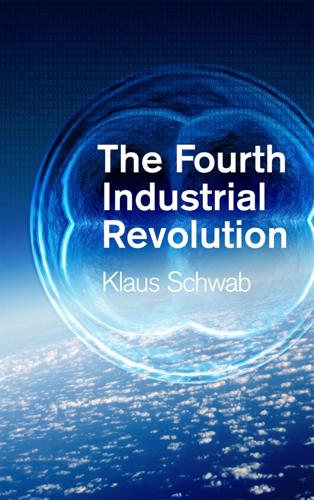
The Fourth Industrial Revolution
by
Klaus Schwab
Published 11 Jan 2016
Positive impacts – Addressing the shortage of donated organs (an average of 21 people die each day waiting for transplants that can’t take place because of the lack of an organ)98 – Prosthetic printing: limb/body part replacements – Hospitals printing for each patient requiring surgery (e.g. splints, casts, implants, screws) – Personalized medicine: 3D printing growing fastest where each customer needs a slightly different version of a body part (e.g. a crown for a tooth) – Printing components of medical equipment that are difficult or expensive to source, such as transducers99 – Printing, for example, dental implants, pacemakers and pens for bone fracture at local hospitals instead of importing them, to reduce the cost of operations – Fundamental changes in drug testing, which can be done on real human objects given the availability of fully printed organs – Printing of food, thus improving food security Negative impacts – Uncontrolled or unregulated production of body parts, medical equipment or food – Growth in waste for disposal, and further burden on the environment – Major ethical debates stemming from the printing of body parts and bodies: Who will control the ability to produce them?
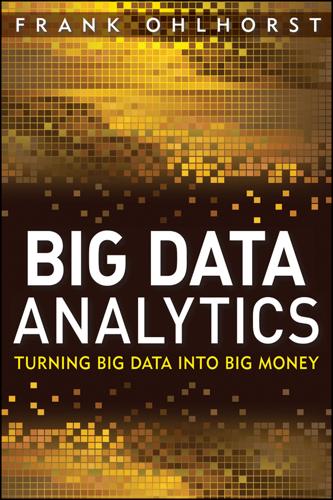
Big Data Analytics: Turning Big Data Into Big Money
by
Frank J. Ohlhorst
Published 28 Nov 2012
The validation of Big Data analytics can be illustrated by advances in science. The biomedical corporation Bioinformatics recently announced that it has reduced the time it takes to sequence a genome from years to days, and it has also reduced the cost, so it will be feasible to sequence an individual’s genome for $1,000, paving the way for improved diagnostics and personalized medicine. The financial sector has seen how Big Data and its associated analytics can have a disruptive impact on business. Financial services firms are seeing larger volumes through smaller trading sizes, increased market volatility, and technological improvements in automated and algorithmic trading.

Warnings
by
Richard A. Clarke
Published 10 Apr 2017
Already, Chinese scientists have used the technique in goat embryos to delete genes that suppress hair and muscle growth, resulting in animals with longer hair and more muscle, ostensibly better at producing both meat and wool. In fact, dozens of Chinese labs have plunged headlong into CRISPR/Cas9 experimentation in fields ranging from animals to agriculture to biomedicine to human transformation.7 Personalized medicine and the elimination of genetic disorders is another potential bright spot in the future of CRISPR/Cas9. Scientists can now snip out defective genes that cause disease, replacing them with healthy ones. Such a procedure would be most easily carried out for conditions caused by a single genetic mutation, such as sickle-cell anemia, Huntington’s disease, or cystic fibrosis.
…
See also Fukushima Daiichi nuclear disaster Nuclear reactors, 83–84, 85–86 Nuclear weapons, in Pakistan and India, 264–73, 281–82 Nuclear winter theory, 273–78 Obama, Barack, 283 influenza outbreak, 218 Iraq and, 63 Keystone Pipeline and, 254 Madoff fraud and SEC, 118–19 nuclear weapons and, 281 Syria and, 57, 61, 64–74 Ocrant, Michael, 106, 108, 110 O’Dell, Tawni, 121 Office of Strategic Services (OSS), 21 Off-putting personality, 183–84 Offshore drilling, 42 Off-target events, 333–34 Okamura, Yukinobu, 75–82 data of, 78, 79 earthquake geology and safety guidelines, 75–78, 80–81, 90, 93–94, 97 Okhotsk Plate, 80 Onagawa Nuclear Power Plant, 90–91 O’Neill, Eugene, 143 O’Neill, John P., 8 On the Origin of Species (Darwin), 325 OODA loop (observe, orient, decide, act), 371n OPEC (Organization of the Petroleum Exporting Countries), 23–24 OpenAI Institute, 210 OpenSSL, 179 Operation IceBridge, 246 Operation Smiling Buddha, 266 Oppenheimer & Co., 153, 161 Options trading, 103–4 Oregon State University, 240–41, 352 Organic Act of 1910, 124–25 Organizing Committee for the International Conference on Recombinant DNA, 337 Orient No. 2 mine explosion, 127 O-rings, and Challenger disaster, 11–13 Orthogonal thinking, 184, 235 Oswald, Lee Harvey, 99 Our Final Invention (Barrat), 202 Outbreak (movie), 219–20 Outlandishness, 174 Oxford University, 212 Pacific Plateau, 80 Pacific Ring of Fire, 94 Pakistan, 261–73 bin Laden raid, 268–69 Cold Start, 267, 270 Mumbai terrorist attacks of 2008, 261–64 nuclear weapons and India, 264–73, 281–82 partition of, 265–66 Pakistani Army, 266–67 Pakistani Navy, 264, 270 Pakistan War College, 269 Palm Beach Country Club, 101 Panasenko, Sharon, 327 Pandemic disease, 217–36 Panetta, Leon, 64, 200 Panoramic Survey Telescope and Rapid Response System (Pan-STARRS), 310–11, 315 Paris Agreement, 247–50 Path Where No Man Thought, A: Nuclear Winter and the End of the Arms Race (Sagan and Turco), 276–77 Paulson, John, 149 Peabody Prize, 226 Peace Corps, 62 Pearl Harbor: Warning and Decision (Wohlstetter), 19, 21 Pearl Harbor attack, 20–21 Penicillin, 229 Penney, Alexander, 186 People’s Liberation Army Navy, 199 Performance Coal Company, 130, 134, 139 “Permabears,” 236 Persian Gulf War. See Gulf War Personal investment, of critics, 187–88 Personalized medicine, 331–32, 342 Personal responsibility, sense of, 185–86 Persuasion campaign, 364–65 Pessimism, 2, 3, 50, 236 “Pet Rock problem,” 321 Piccone, Michele, 380n Pielke, Roger, Jr., 254 Planetary Defense Program Office, 317, 322–23 Plant elevation, and Fukushima nuclear disaster, 89–90 Plaquemines Parish, 39 Plutonium spheres (pits), 83 Polar ice melt, 239, 245–52, 258–60, 360 Political threshold problem, 321–22 Polk Prize, 226 Pollack, James B., 273 Pomona College, 327 Pontchartrain, Lake, 40 Ponzi, Charles, 105 Ponzi scheme, 102–3, 105, 110–11, 113, 115 Population bomb, 192–93 Population Bomb, The (Ehrlich), 192–93 Population growth, 16, 192–93 Predictions, 13–15 Predictor (possible Cassandra), 168, 170, 182–86 President’s Daily Briefing, 24, 35 Prevention strategy, 362–64 Prince, Chuck, 145, 154, 156, 157 Professional investment, of critics, 187–88 Programmable logic controller (PLC), 291–92 Protecting Industrial Control Systems from Electronic Threats (Weiss), 286 Protein & Cell, 340 Providian, 152 Prykarpattyaoblenergo, 284–85 Public Health Service, 354–55 Pulitzer Prize, 50, 226 Putin, Vladimir, 285 Pyrrho of Elis, 185 Questioners, 184–85 Radiation exposure, 88 Ramadi, Iraq, 69 Rampart Investment Management, 101, 102, 105, 106, 109, 110 Raqqa, 68 Reacting, Ronald, 26 Reagan, Ronald, 21, 32, 277–78, 280 Recombinant DNA technology, 336–40 Red Army, 25, 26, 266 Red Team (Zenko), 379n Regulatory capture, 94–95, 96, 98, 115, 177–78 Reid, Ann, 222 Reis Crater, 307 Rendezvous with Rama (Clarke), 313 Response Availability, 170–71 Response strategies, 358–64 hedging, 361–62 mitigation and prevention, 362–64 surveillance, 359–60 Responsibility, diffusion of, 176–77, 215, 235, 321, 348 Revkin, Andrew, 244 Ribozymes, 328 Ring of Fire, 94 RNA, 327–28 Robock, Alan, 261, 273–74, 277–82 Robo-traders, 211 Roche, 225 Rockefeller Institute, 193 Roedersheimer, Keefe, 205 Rolling Stone (magazine), 338 Rometty, Ginni, 209 Roosevelt, Franklin D., 213 Roper, William, 214 Ross, Bill, 136 Ross, Lee, 184 Royal Academy, 345 Royal Air Force, 10 Royal Navy, 9 Royal Netherlands Meteorological Institute, 253 Rubenstein, Ariel, 380n Ruby, Jack, 99 Rumsfeld, Donald, 28–29 Russo, Rene, 219 Rutgers University, 261 Sagan, Carl, 273–77 Sago Mine disaster, 129–30 Salling, John Peter, 122 Samuel, Arthur, 381n San Bruno pipeline explosion of 2010, 293–94 Sandler O’Neill & Partners, 154 Sandworm, 285 Sanriku earthquake of 869, 77–81, 91, 97–98 Sarbanes-Oxley Act (SOX), 157 Sarin, 23, 230 Satisficing, 116, 117, 180–81, 319, 322, 359 Savage, Stefan, 297–98 Scacco, Gus, 149 Scanning for problems, 354–56 Scarface (movie), 99 Scenario modeling, 360, 363–64 Schapiro, Mary, 118–19 Schlesinger, Michael, 240–41 Schneider, Stephen, 241 Science (journal), 242 Science Story (show), 226 Scientific American, 278–79 Scientific method, 248–49 Scientific reticence, 79–80, 186–87, 234, 248–49, 259, 335 “Scope neglect,” 174 Sea-level rise, 238, 244–60, 360 Search for extraterrestrial intelligence (SETI), 304 Seawalls, and Fukushima nuclear disaster, 77, 85, 89–90, 92–93 Securities and Exchange Commission (SEC), 100, 105–12, 114–20, 189–90 Security by obscurity, 270 Seismologist Warns, A (Ishibashi), 91–92 Selection effect, 380n Self-confidence, 184, 240, 365 Self-interest, of critics, 187–88 Sendai, Japan, 80, 81, 82 Sentinel intelligence, 3, 16, 356 “Separation of parts” policy, 270 September 11 attacks, 7–9, 230, 361–62 Seven Pillars of Wisdom: A Triumph (Lawrence), 57 Sextus Empiricus, 185 Shearson Lehman, 162 Shia Muslims, 63 Shoemaker, Gene, 306–7 Shultz, George, 280 Siberian Unified Dispatch Control Center (SUDCC), 290 Siegel, Jeremy, 157–58 Siegfried Line, 10 Sieur de Bienville, Jean-Baptiste Le Moyne, 41 Signal and the Noise, The (Silver), 15 Signal from noise, separating, 356–58 Silver, Nate, 13, 15 Silver mining, 128–29 Simon, Herbert, 180–81, 322 Simons, Daniel, 175 Singularity, the, 209 60 Minutes (TV show), 119, 162, 244 Skepticism, 151–53, 168, 185, 240, 248–49 Skynet, 205 Smith & Wesson, 99, 109 Snowden, Edward, 211 Solid rocket boosters, and Challenger disaster, 11–13 Somalia, 65 Soothsayers, 1–2 “Sophistication effect,” 187 South Africa, 42–43 Soviet Union, 25–26, 266, 267–68, 271, 273–74, 277–78 Spaceguard goal, 312–17, 319 Space Shuttle Challenger disaster, 11–13 SpaceX, 202 Spanish flu pandemic of 1918, 195, 198, 217, 221–24 Spielberg, Steven, 101 Split-strike conversion, 103–5 SSH (Sayano-Shushenskaya Hydro), 289–2917 Stalin, Joseph, 174, 213 Standard project hurricane (SPH), 52–53 “Standing start,” 266 Stanford University, 89, 184, 192, 226, 337, 338 Steam engine, 174–75 Stock trading.
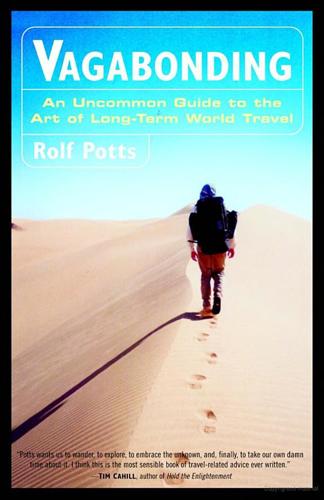
Vagabonding: An Uncommon Guide to the Art of Long-Term World Travel
by
Rolf Potts
Published 24 Dec 2002
If any kind of sickness persists for more than a few days, it can’t hurt to relate your symptoms to a local doctor or pharmacist. Most will be familiar with local maladies and happy to set you up with inexpensive prescriptions for whatever ails you. (Of course, a small first-aid kit full of bandages, antiseptic, painkillers, and personal medicines should already be a part of your travel gear.) If your sickness threatens to get serious, make your way to a major city and check into a modern hospital. Crime and scams are common wherever travelers are found, though they are generally no more dangerous than the average annoyances in your hometown.

Sapiens: A Brief History of Humankind
by
Yuval Noah Harari
Published 1 Jan 2011
Lawyers need to rethink issues of privacy and identity; governments are faced with rethinking matters of health care and equality; sports associations and educational institutions need to redefine fair play and achievement; pension funds and labour markets should readjust to a world in which sixty might be the new thirty. They must all deal with the conundrums of bioengineering, cyborgs and inorganic life. Mapping the first human genome required fifteen years and $3 billion. Today you can map a person’s DNA within a few weeks and at the cost of a few hundred dollars.20 The era of personalized medicine – medicine that matches treatment to DNA – has begun. The family doctor could soon tell you with greater certainty that you face high risks of liver cancer, whereas you needn’t worry too much about heart attacks. She could determine that a popular medication that helps 92 per cent of people is useless to you, and you should instead take another pill, fatal to many people but just right for you.
…
nav=E8. 17 Miguel Nicolelis, Beyond Boundaries: The New Neuroscience of Connecting Brains and Machines – and How it Will Change Our Lives (New York: Times Books, 2011). 18 Chris Berdik, ‘Turning Thought into Words’, BU Today, 15 October 2008, accessed 22 March 2012, http://www.bu.edu/today/2008/turning-thoughts-into-words/. 19 Jonathan Fildes, ‘Artificial Brain “10 years away” ’, BBC News, 22 July 2009, accessed 19 September 2012, http://news.bbc.c0.uk/2/hi/8164060.stm. 20 Radoje Drmanac et al., ‘Human Genome Sequencing Using Unchained Base Reads on Self-Assembling DNA Nanoarrays’, Science 327:5961 (2010), 78–81; ‘Complete Genomics’ website: http://www.completegenomics.com/; Rob Waters, ‘Complete Genomics Gets Gene Sequencing under $5000 (Update 1)’, Bloomberg, 5 November 2009, accessed 10 December 2010; http://www.bloomberg.com/apps/news?pid=newsarchive&sid=aWutnyE4S0Ww; Fergus Walsh, ‘Era of Personalized Medicine Awaits’, BBC News, last updated 8 April 2009, accessed 22 March 2012, http://news.bbc.co.Uk/2/hi/health/7954968.stm; Leena Rao, ‘PayPal Co-Founder and Founders Fund Partner Joins DNA Sequencing Firm Halcyon Molecular’, TechCrunch, 24 September 2009, accessed 10 December 2010, http://techcrunch.com/2009/09/24/paypal-co-founder-and-founders-fund-partner-joins-dna-sequencing-firm-halcyon-molecular/.

The Patient Will See You Now: The Future of Medicine Is in Your Hands
by
Eric Topol
Published 6 Jan 2015
There is indeed now a “race against machines” that is pervasive, and it would be naïve to think that medicine is immune from the impact.6 The medical thriller novelist and physician Robin Cook wrote Cell, his thirty-third book, about iDoc—“a smartphone functioning as a twenty-first-century primary-care physician,”7 an avatar doctor equipped with algorithms to “create a true ersatz physician on duty twenty-four-seven for a particular individual, truly personalized medicine.”7 Each individual signing up selects an avatar doctor, choosing their gender, attitude, whether they are paternal or maternal in tone, and how they want to be notified. The system involves a remote command center staffed with hundreds of physicians who work four-hour shifts to keep them mentally crisp, and a supercomputer that, in real time, continuously monitors extensive physiological data on all iDoc users.
…
Knowlan, age eighty-six, included in his address to the incoming students: But what can you, the class of 2017, expect? In a recent thought-provoking book, The Creative Destruction of Medicine . . . [Topol] anticipate[d] future changes in the health care delivery system. He commented on changes such as use of smartphones for complex diagnostic challenges and personalized medicine with use of genetic information. He even suggested that the stethoscope, so revered here at Georgetown, will be replaced by a handheld ultrasound device. He admitted to not using his own stethoscope for over 2 years, which suggests to me he never learned to use it properly and appreciate its value.

How Everything Became War and the Military Became Everything: Tales From the Pentagon
by
Rosa Brooks
Published 8 Aug 2016
As former Air Force deputy judge advocate general Charles Dunlap notes in a recent article on what he calls “the hyper-personalization of war,” these capabilities are rapidly being militarized: “In the not-too distant future, the U.S. military—and likely other militaries—will be able to launch swarms of drones equipped with facial recognition software to roam battlefields looking for very specific members of an enemy’s force.”2 In the bioscience world, breakthroughs in our understanding of genetics are opening up the possibility of personalized medicine: cancer treatments tailored to a specific person’s genetic code, for instance. But the same discoveries that may soon allow doctors to tailor life-saving treatments to the needs of specific individuals may also allow the development of DNA-linked bioweapons: a virus designed to disable or kill only a specific individual.
…
W., 9 Muse, Abdiwali Abdiqadir, 41, 46 Musharraf, Pervez, 107–8 Nagasaki, atomic bombing of, 191 Nagl, John, 92–93, 95 Nairobi, bombing of U.S. embassy in, 83, 223 Napoleon III, emperor of France, 187 Napoleonic Wars, 186, 348 Narmer Palette, 169 Nation, 147–48 National Defense University, 108 National Guard, 258 national identity, 230, 400 national security, 414 new paradigm needed for, 359–62 National Security Agency (NSA), 129, 130, 131 eavesdropping by, 275, 284 National Security Archive, 126 National Security Council, 307–9 National Security Strategy, U.S., 83 nation building, 80, 81, 102–3, 160–61 nation-states, see states Native Americans, war rituals of, 9, 21, 172, 173, 176 NATO, 27, 243–44, 247, 249 Navajo, war rituals of, 9, 21, 172, 176 Naval Act (1794), 48 Navy, U.S., 143, 145, 160 Barbary pirates and, 48–49 counterpiracy operations of, 45–47 strategic vision of, 161 as tech-heavy, 160–61 Navy SEALs, 40, 41, 120, 121 Nawab of Bengal, 257 Near, Holly, 272 necessity, principle of, 288, 405 Nek Mohammed, 106 Neolithic era, 264 New York Times, 55, 94, 106, 107, 116, 128, 147, 296–97 NGOs (nongovernmental organizations), 71, 82 drone strikes investigated by, 107 humanitarian aid by, 96 Nicaragua, 26 Nigeria, 12, 45, 345 9/11 Commission report, 119, 126 nonstate actors, 41, 133, 161, 193–94, 219, 227, 232, 250, 253, 263 Northern Alliance, 60, 99, 119, 121, 329 North Korea, 259 nuclear weapons, 263, 265 Nuremberg tribunals, 192, 193, 215 Obama, Barack, 85, 98, 113, 119, 169, 266, 278, 292, 316, 328–29, 363 Afghanistan War and, 103 CIA secret prisons closed by, 62 drone “kill lists” and, 116 foreign policy of, 261 Guantánamo and, 61–67 interrogation policies of, 62 Iraq War and, 103 preventative detention policy of, 64–65, 66–67 Syrian civil war and, 248 torture banned by, 34 and unrestricted war, 294, 347–48 war on terror and, 34 Obama administration, 121, 220 in Afghanistan War troop-level debate, 311–14 AUMF law as interpreted by, 293–95 drone strikes and, 284–85 Kyrgyzstan and, 307–9 Sudan and, 309–11 Obangame Express, 45 obesity epidemic, military and, 321–22 Ocean Shield, Operation, 45 Odierno, Raymond, 143–45, 146, 148, 149, 150, 155, 156 Odyssey Dawn, Operation, 85 Office of Legal Counsel, 55 Office of Naval Research, 46 Oklahoma City bombing, 219, 223 Old Norse literature, 9, 172 101st Airborne, 182 Ordinances of War (English), 185 organized crime, 41 Otterbein, Keith, 173 Oxfam, 263 Pacific Command, U.S., 72, 147, 389 Padilla, Jose, 33 Pakistan, 5–6, 12, 60, 226, 349 U.S. drone strikes in, 106–7, 113 U.S. military intervention in, 251 Pakistani Taliban, 278, 279 Paleolithic period, 264 Panetta, Leon, 119–20 Papua New Guinea, 9, 21, 175, 350 Paris Declaration (1856), 49 pattern analysis, 303, 304, 414 peace: blurred line between war and, 8–9, 13, 21–24, 35–36, 141, 143, 148, 213, 225, 267, 273, 276, 305, 333, 334, 338, 341–42, 343, 345, 350, 351, 366 as exception in history, 348–49, 352 “space between” war and, 352–54 Pearl Harbor, Japanese attacks on, 11 Pentagon: as physical environment, 39–40 see also Defense Department, U.S.; September 11, 2001, terrorist attacks People’s Liberation Army, Chinese, 10 Perino, Dana, 61 Perry, John, 299 Persia, ancient, 255 personalized medicine, 132 Peru, 173–74 Petraeus, David, 5, 66, 94 Phase Zero, 7, 82, 143–44, 148–49 Philippines, 12, 349 Phillips, Richard, 40 Pilica, Bosnia, 206 Pinochet, Augusto, 271–72, 273 pirates, piracy: Barbary coast and, 47–49 Defense Department policy on, 42–45 international law and, 42–43, 49 Maersk Alabama seized by, 40–41, 45 state-sponsored, 47–49 “PlayStation mentality,” 109–10 plebes, 182 policing: civil liberties and, 354 war on terror and, 298–99 policymakers, misunderstanding and mistrust between military and, 305–6, 362 “Politics of the Geneva Conventions, The” (conference), 199 polonium-210, 273 population, global, 262 post-traumatic stress disorder (PTSD), of drone pilots, 110 Power, Matthew, 115 Power, Samantha, 67, 234 power grid, cyberattacks on, 11 precision weapons, 129 Predator drones, 105, 106, 112, 135, 199 president, U.S.: constitutional powers of, 294 inherent powers of, 200, 202 preventive detention, 63–65, 66–67 rule of law and, 63–64, 65 Prins, Brandon, 46 prisoners of war, 63 privacy, war on terror and, 303–4 private contractors: laws of war and, 123 U.S. reliance on, 123–24, 258, 326 war on terror and, 297–98, 300 Problem from Hell, A (Power), 234 “proportionality,” in law of armed conflict, 196–97 proportionality, principle of, 288, 405 Pro Publica, 119 proxy conflicts, 339, 349 Pruitt, Gary, 304 public education, 322 Public Interest Declassification Board (PIDB), 126 Purchas, Samuel, 256–57 Putin, Vladimir, 273, 280 Qiao Liang, 10, 11, 12, 22, 341 RAF, see regionally aligned forces Railway Wood, Battle of (1916), 114 Ramallah, West Bank, 242 Rasul v.

Human + Machine: Reimagining Work in the Age of AI
by
Paul R. Daugherty
and
H. James Wilson
Published 15 Jan 2018
AI is also operating in the R&D departments responsible for these changes in mass customization. (For a brief discussion of the balance between personalization and privacy, see side bar “Responsible AI: Ethics as a Precursor to Discovery.”) Take, for example, the health-care industry. AI is now enabling the era of “personalized medicine” based on genetic testing. In the past, it was virtually impossible to analyze and manage all the combinations of possible treatments for each patient by hand. Today, intelligent systems are taking over that job. Decades from now (or sooner), it will seem absurd that doctors prescribed the same treatment to a wide swath of their patients.
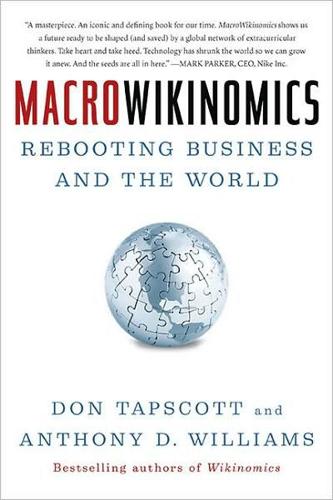
MacroWikinomics: Rebooting Business and the World
by
Don Tapscott
and
Anthony D. Williams
Published 28 Sep 2010
Or simply type in a zip code and pull up a list of polluters in their neighborhood. Data sharing also drives economic opportunity and, on occasions, has been known to spark new growth industries. When the National Institutes of Health released data from the Human Genome Project it spurred massive innovation around a new era of personalized medicine. President Reagan’s directive to provide free and open access to the Defense Department’s GPS signals gave rise to a plethora of commercial uses ranging from mapmaking, land surveying, scientific analysis, and surveillance to hobbies such as geo-caching and waymarking. The Obama administration hopes Data.gov—an open hub for federal data—will amplify and accelerate this tradition of innovation.
…
Obese people are less likely than people in every other weight category (overweight, normal weight, underweight) to have eaten five servings of fruits and vegetables on at least three days of the past seven. Obese Americans also are less likely to say they ate healthy “all day yesterday.” 19. Thomas Goetz, The Decision Tree: Taking Control of Your Health in the New Era of Personalized Medicine (Rodale Books, 2010), p. 238. 20. M. Kwan and N. Haque, “Sermo and PatientsLikeMe: A Revolution in Collaborative Healthcare,” Enterprise 2.0 Lighthouse Case Study, nGenera Corporation (2008). 21. Ibid. 22. Ibid. 23. Ibid. 24. “Social Networking May Benefit Patients with Common Skin Disease,” Center for Connected Health (January 21, 2009). 25.

Competing on Analytics: The New Science of Winning
by
Thomas H. Davenport
and
Jeanne G. Harris
Published 6 Mar 2007
We also interviewed executives from three different pharmaceutical firms, and we categorized two of the three into stage 3 at present. It was clear to all the managers that analytics were the key to the future of the industry. The combination of clinical, genomic, and proteomic data will lead to an analytical transformation and an environment of personalized medicine. Yet both the science and the application of informatics in these domains are as yet incomplete.13 Each of our interviewees admitted that their company, and the rest of the industry, has a long way to go before mastering their analytical future. One of the companies, Vertex Pharmaceuticals, has made significant progress toward analytical competition—not by striving toward the analytical holy grail described earlier, but by making more analytical decisions in virtually every phase of drug development and marketing.

Where Does It Hurt?: An Entrepreneur's Guide to Fixing Health Care
by
Jonathan Bush
and
Stephen Baker
Published 14 May 2014
For every medicine that makes it from the laboratory to the pharmacy shelf, 999 fail, some of them in the second, third, or fourth stage of testing—in other words, after being deemed safe. Some of those drugs too could be placed on the market, where consumers participate in a kind of informal laboratory. This could be one of the pathways leading toward personalized medicine. A lot of those researchers will be amateurs, compiling data on wikis, writing their conclusions on blogs, or debating them on social networks. In this way, they will not only carry out the experiments but also handle lots of the research and analysis. (They won’t replace all of the professionals, but will force them to adapt to a widening market.)
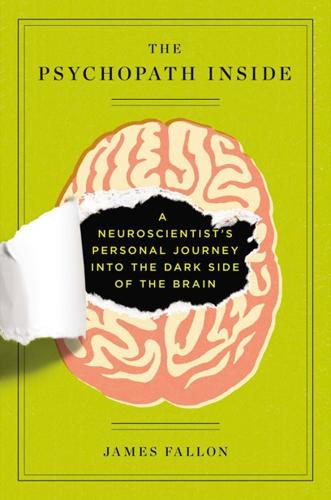
The Psychopath Inside: A Neuroscientist's Personal Journey Into the Dark Side of the Brain
by
James Fallon
Published 30 Oct 2013
Successful examples exist for complex diseases never previously understood through “omics” medicine, including genomics (genes and related nucleic acids in the nucleus), transcriptomics (various mRNA levels in tissues), proteomics (different levels of proteins and their interactions in relevant tissues), and metabolomics (blood and urine levels of several thousand hormones, metabolites, sugar, etc., and their dynamic interactions over time). Personal genomics and personalized medicine emerge as new feasible applications and not only as future possibilities, thanks to the developments in analyzing genomes and complex traits and visualizing these results into a unified framework. In any case, it would be a while before someone took the time to give my genes a good looking-over.
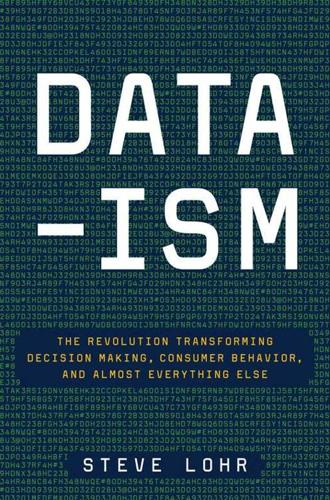
Data-Ism: The Revolution Transforming Decision Making, Consumer Behavior, and Almost Everything Else
by
Steve Lohr
Published 10 Mar 2015
GE wants to push contextual computing in the machine world to another dimension. Most of the current focus has been on gathering data from machines to learn about them—to reduce lost operating time by applying data-driven preventive maintenance. With machines, as with vineyards, the comparison typically offered is to preventive and personalized medicine. You can prevent machine failures with tailored treatment, informed by data. But the next step is technology to enable the machines themselves to learn about their environment and adapt to it. Take the case of a jet engine on an airliner whose route takes it to different climates, like flying from Arizona to Canada.

Critical: Science and Stories From the Brink of Human Life
by
Matt Morgan
Published 29 May 2019
Hallett, M. Volitional control of movement: the physiology of free will. Clin Neurophysiol 118, 1179–1192 (2007). ‘With the development of machines such as IBM’s supercomputer Watson, even this human integration based on knowledge and experience can be replicated.’ Goetz, L. H. & Schork, N. J. Personalized medicine: motivation, challenges, and progress. Fertil. Steril. 109, 952–963 (2018). ‘. . . the first weekend of March saw sixteen weather-related deaths as the heaviest snowfall in more than thirty-five years was dumped on an ill-prepared UK.’ https://en.wikipedia.org/wiki/2018_Great_Britain_and_Ireland_cold_wave ‘. . . one of the busiest periods for critical care services ever described, with my ICU swelling to over 170 per cent of its funded capacity.’
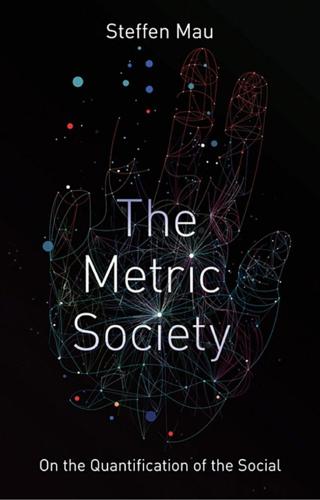
The Metric Society: On the Quantification of the Social
by
Steffen Mau
Published 12 Jun 2017
The resulting information may also go to doctors or other professional consultants for purposes of remote health monitoring, which is currently used in the main for chronic diseases such as diabetes or heart failure, but can potentially be extended to include all aspects of sickness or health. This approach to health monitoring yields a hitherto unimaginable wealth of vital signs which are clearly invaluable for science, prophylaxis, early detection and treatment, including new possibilities of personalized medicine. Nowadays, there are even implants on the market that can remain permanently in situ, transmitting data signals on an ongoing basis. These built-in measuring stations create new interfaces between the inner and outer body. Currently, their main purpose is to improve the efficiency of disease monitoring, but increasing numbers of people are now also using them for everyday health tracking.
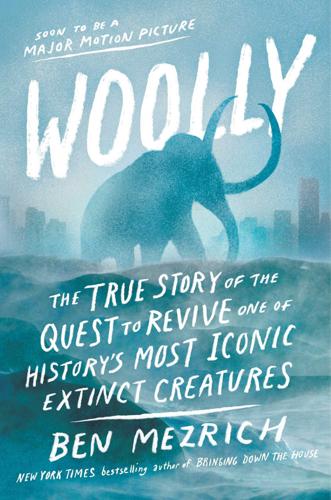
Woolly: The True Story of the Quest to Revive History's Most Iconic Extinct Creature
by
Ben Mezrich
Published 3 Jul 2017
Ten years after her 1995 start-up Direct Medical Knowledge had become the backbone of what was now known as WebMD, Phelan had founded a company called DNA Direct, offering genetic testing to customers via the Internet. By screening for preconditions for more than a half dozen diseases, DNA Direct had been aimed at the same sort of personalized medicine that Church foresaw for his Personal Genome Project. Phelan had sought Church out for the advisory board of her company. He had happily accepted and asked her to be on the board of his Personal Genome Project. But they didn’t reconnect for another few years, a short time before the trip to Petaluma, because of an odd little email Brand had sent Church, which had landed in his inbox just a few days after his phone call with Nicholas Wade.

The Numerati
by
Stephen Baker
Published 11 Aug 2008
In universities and pharmaceutical labs around the world, computer scientists and computational biologists are designing algorithms to sift through billions of gene sequences, looking for links between certain genetic markers and diseases. The goal is to help us sidestep the diseases we're most likely to contract and to provide each one of us with a cabinet of personalized medicines. Each one should include just the right dosage and the ideal mix of molecules for our bodies. Between these two branches of research, genetic and behavioral, we're being parsed, inside and out. Even the language of the two fields is similar. In a nod to geneticists, Dishman and his team are working to catalog what they call our "behavioral markers."
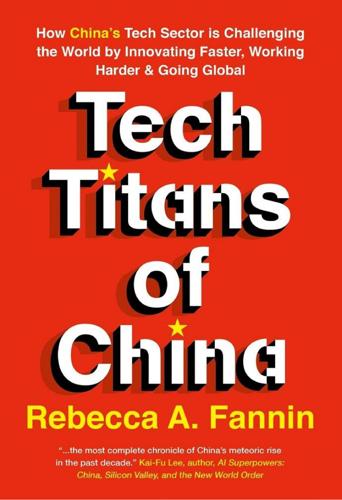
Tech Titans of China: How China's Tech Sector Is Challenging the World by Innovating Faster, Working Harder, and Going Global
by
Rebecca Fannin
Published 2 Sep 2019
Alipay uses facial recognition for payments, and Alibaba has an AI cloud platform called City Brain that crunches data and determines patterns for better urban planning. Tencent is integrating rich media formats such as face-swapping effects and video chat filters into its social media and is investing in personalized medicine, digitized patient health-care records, and remote health-care monitoring. In their quest to win the AI challenge, the three titans are hunting for new AI technologies and applications by investing in AI startups globally. Since 2014, this trio of Chinese tech giants has made 39 equity deals in startups that are building AI chips and software.2 Despite scrutiny over Chinese investments in US technology startups, this cross-border pipeline is active in artificial intelligence.

Chasing My Cure: A Doctor's Race to Turn Hope Into Action; A Memoir
by
David Fajgenbaum
Published 9 Sep 2019
In scientific terms, this is translational research: We translate what we learn from in-depth clinical data analyses to guide which lab experiments to perform on patient biospecimens; we translate those findings back to the clinical research arena for further testing; and then, we try to translate it all into new drugs or diagnostic tools for patients. In my new faculty role, I also codirected a one-week course to teach fourth-year medical students about precision medicine and, indirectly, how to think outside the box (without needing to nearly die five times first). Precision medicine, or personalized medicine as it’s sometimes called, is a new approach to disease management whereby each patient is treated based on her or his precise genetic makeup and specific disease characteristics, rather than treating everyone with a particular disease in the same way. Using sirolimus, which is typically prescribed to kidney transplant patients, to treat me, an iMCD patient, based on results from studies done on my samples, is an example of precision medicine in action.
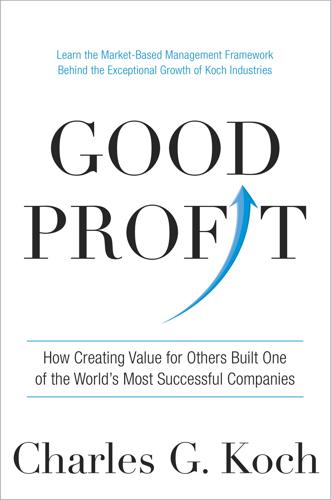
Good Profit: How Creating Value for Others Built One of the World's Most Successful Companies
by
Charles de Ganahl Koch
Published 14 Sep 2015
SPONTANEOUS KNOWLEDGE SHARING The Koch Institute’s research is focused on five programs viewed as critical for rapid progress toward controlling cancer: (1) developing nanotechnology-based cancer therapeutics; (2) creating novel devices for cancer detection and monitoring; (3) exploring the molecular and cellular basis of metastasis; (4) advancing personalized medicine through systematic analysis of cancer pathways and drug resistance linked to individual cancers; and (5) engineering the immune system to fight cancer. The institute’s merging of technologies, disciplines, and approaches in each of these areas, traditionally viewed as distinct, creates a host of new opportunities.
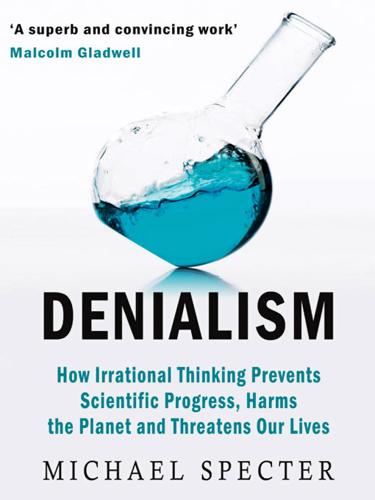
Denialism: How Irrational Thinking Hinders Scientific Progress, Harms the Planet, and Threatens Our Lives
by
Michael Specter
Published 14 Apr 2009
“But if reality upsets people, they will simply look in another direction. People deny what makes them uncomfortable, and many—even in my business—say we shouldn’t use the word ‘race’ at all.” It has never been easy to invoke the subject of race in America. Discrimination has long been as obvious in medicine as in other areas of society. In the era of personalized medicine, where relevant new information seems to appear daily, the issue has become more volatile than ever. At many meetings where race and genetics are discussed, researchers spend as much time debating semantics as they do discussing scientific results. (In 2008, one participant at a National Institutes of Health conference on genomics and race argued that not only is the term “race” unacceptable, but so is the term “Caucasian,” because it implies racial rather than geographic ancestry.)
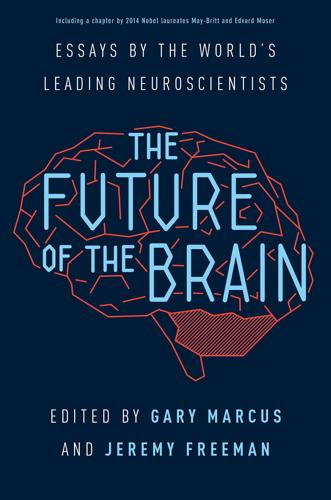
The Future of the Brain: Essays by the World's Leading Neuroscientists
by
Gary Marcus
and
Jeremy Freeman
Published 1 Nov 2014
Previous monolithic diseases, such as breast cancer, brain cancer, depression, dementia and autism, have splintered off into a myriad of more specific pathologies, defined not so much by common behavioral phenotypes but by shared mutations, molecular pathways and biochemical mechanisms. In combination with cheap, reliable, and fast genetic tests, the age of personalized medicine, long trumpeted by Leroy Hood, Craig Venter, and other pioneers, arrived in which familial predispositions to behavioral traits, pharmacological interventions, and diseases, permit much more targeted interventions. Bioterrorism has occasionally struck, but the combination of personal genomics, personal immunizers, and a ubiquitous surveillance state has largely kept the population safe.

Dances With Wolves
by
Michael Blake
Published 24 Jan 2011
In the space of a week the two became fast friends, and Dances With Wolves showed up regularly at Stone Calf’s lodge. He learned how to care for and make quick repairs on weapons. He learned the words to several important songs and how to sing them. He watched Stone Calf make fire from a little wooden kit and saw him make his own personal medicine. He was a willing pupil for these lessons and quick to learn, so quick that Stone Calf gave him the nickname Fast. He scouted a few hours each day, as did most of the other men. They went out in groups of three or four, and in a short time Dances With Wolves had a rudimentary knowledge of necessary things, like how to read the age of tracks and determine weather patterns.

You Can't Make This Stuff Up: The Complete Guide to Writing Creative Nonfiction--From Memoir to Literary Journalism and Everything in Between
by
Lee Gutkind
Published 13 Aug 2012
—Lauren Slater, author of Welcome to My Country, Prozac Diary, and Opening Skinner’s Box ALSO BY LEE GUTKIND Almost Human: Making Robots Think Anatomy of Baseball The Art of Creative Nonfiction At The End of Life: True Stories About How We Die Becoming a Doctor: From Student to Specialist, Doctor-Writers Share Their Experiences The Best Creative Nonfiction, Volumes 1, 2, and 3 The Best Seat in Baseball, But You Have to Stand Bike Fever Creative Nonfiction: How to Live It and Write It The Essayist at Work Forever Fat: Essays by the Godfather God’s Helicopter Healing An Immense New Power to Heal: The Promise of Personalized Medicine Keep It Real: Everything You Need to Know About Researching and Writing Creative Nonfiction Many Sleepless Nights One Children’s Place On Nature: Great Writers on the Great Outdoors Our Roots are Deep with Passion The People of Penn’s Woods West Silence Kills Stuck in Time: The Tragedy of Childhood Mental Illness Surviving Crisis Truckin’ with Sam The Veterinarian’s Touch A View from the Divide This book is dedicated to Gay Talese in appreciation of his talent, his integrity, his unwavering dedication to his work, and most of all his friendship.

The Fourth Revolution: The Global Race to Reinvent the State
by
John Micklethwait
and
Adrian Wooldridge
Published 14 May 2014
Just as drones have helped the armed forces, machines will allow doctors to be more precise, making incisions more neatly than human hands can—and even to do it at long distance: As long ago as 2001 doctors in New York used robotic instruments under remote control across the Web to remove the gall bladder of a (rather brave) woman in Strasbourg. Or take those banks of computers and jumbles of health records. Just as computers are now allowing companies to make connections and target services at consumers ever more accurately, so “Big Data” could also allow health departments to personalize medicine. The biggest change maker of all, however, is the Internet. Naming and shaming is gradually coming to health care in the same way it has to education, with doctors’ organizations and public hospitals playing the same role as teachers’ unions, denouncing any attempt to assess their performance as simplistic.

Possible Minds: Twenty-Five Ways of Looking at AI
by
John Brockman
Published 19 Feb 2019
The same method has recently been generalized: Starting from scratch, within just twenty-four hours, an equivalent AlphaZero chess program was able to beat today’s top “conventional” chess programs, which in turn have beaten the best humans. Progress has not been restricted to games. Computers are significantly better at image and voice recognition and speech synthesis than they used to be. They can detect tumors in radiographs earlier than most humans. Medical diagnostics and personalized medicine will improve substantially. Transportation by self-driving cars will keep us all safer, on average. My grandson may never have to acquire a driver’s license, because driving a car will be like riding a horse today—a hobby for the few. Dangerous activities, such as mining, and tedious repetitive work will be done by computers.

Beginners: The Joy and Transformative Power of Lifelong Learning
by
Tom Vanderbilt
Published 5 Jan 2021
Aron et al., “Couples’ Shared Participation in Novel and Arousing Activities and Experienced Relationship Quality,” Journal of Personal and Social Psychology 78 no. 2 (Feb. 2000): 273–84. “cognitive and behavioral flexibility”: See Benjamin Chapman et al., “Personality and Longevity: Knowns, Unknowns, and Implications for Public Health and Personalized Medicine,” Journal of Aging Research (2011), doi:10.4061/2011/759170. “More than any other animal”: Alison Gopnik, “A Manifesto Against ‘Parenting,’ ” Wall Street Journal, July 8, 2016. As the art historian Bruce Redford: See Redford’s fascinating study, Dilettanti: The Antic and the Antique in Eighteenth-Century England (Los Angeles: Getty Center, 2008).
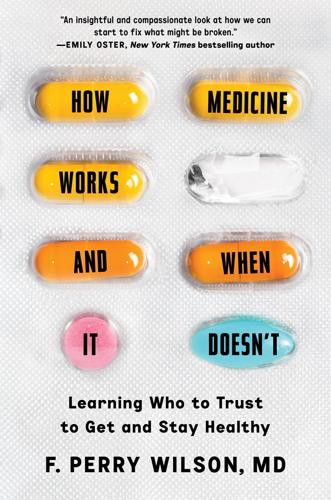
How Medicine Works and When It Doesn't: Learning Who to Trust to Get and Stay Healthy
by
F. Perry Wilson
Published 24 Jan 2023
He then attended medical school at Columbia University College of Physicians and Surgeons before completing his internship, residency, and fellowship at the University of Pennsylvania. In 2012, he received a master’s degree in clinical epidemiology, which has informed his research ever since. At Yale University since 2014, his goal is to use patient-level data and advanced analytics to personalize medicine to each individual patient. To that end, he holds multiple grants from the National Institutes of Health and is the director of Yale’s Clinical and Translational Research Accelerator. Dr. Wilson is internationally recognized for his expertise in the design and interpretation of medical studies.
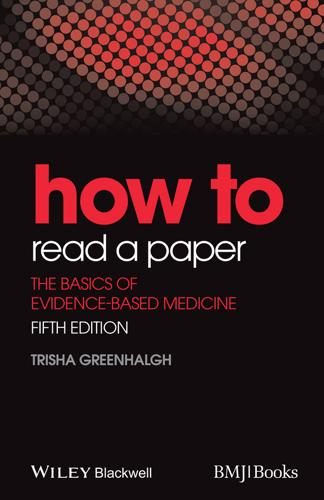
How to Read a Paper: The Basics of Evidence-Based Medicine
by
Trisha Greenhalgh
Published 18 Nov 2010
Journal of General Internal Medicine 2012;27(10):1361–7. 26 March L, Irwig L, Schwarz J, et al. n of 1 trials comparing a non-steroidal anti-inflammatory drug with paracetamol in osteoarthritis. BMJ: British Medical Journal 1994;309(6961):1041–6. 27 Lillie EO, Patay B, Diamant J, et al. The n-of-1 clinical trial: the ultimate strategy for individualizing medicine? Personalized Medicine 2011;8(2):161–73. 28 Moore A, Derry S, Eccleston C, et al. Expect analgesic failure; pursue analgesic success. BMJ: British Medical Journal 2013;346:f2690. Chapter 17 Criticisms of evidence-based medicine What's wrong with EBM when it's done badly? This new chapter is necessary because evidence-based medicine (EBM) has long outlived its honeymoon period.
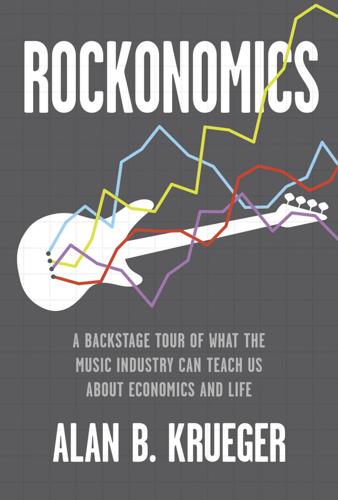
Rockonomics: A Backstage Tour of What the Music Industry Can Teach Us About Economics and Life
by
Alan B. Krueger
Published 3 Jun 2019
In professional sports, most of the revenue that teams earn is generated from selling television and cable rights to broadcast live games.28 Revenue from the gate for live sporting events is the equivalent of a live concert—but there is rarely an opportunity for musicians to earn additional money from recording or broadcasting their live shows. In the future, it would make economic sense for fans to purchase recordings and videos of live events, and for more artists to experiment with live-streaming their concerts to increase revenues. Personalization may also be coming to recorded music, just as personalized medicine is the frontier in health care. The multitalented singer and musician Jacob Collier has offered to personalize music for his patrons on Patreon. Fans submit a recording of their lyrics, and Collier puts it to music and harmonizes it. Not surprisingly, the music ends up sounding much better once the Grammy Award–winning musician is done.
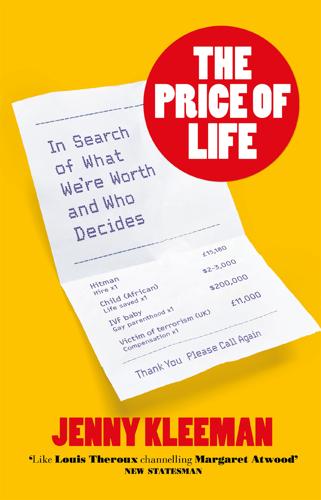
The Price of Life: In Search of What We're Worth and Who Decides
by
Jenny Kleeman
Published 13 Mar 2024
You can say that again. It turns out that there’s a voluntary moratorium on genetic testing in insurance, reviewed every year when the ABI writes a report for the UK government on the state of the insurance market and development of genomic technologies. But in an era when genetic testing and personalized medicine are becoming routine, it’s easy to imagine this being dropped one day, and a strand of hair, a drop of saliva or a vial of blood being as necessary for insurance as those long, dull questionnaires. I thought getting to grips with the theory part of this would be like brown rice: necessary, good for me to know, but difficult to get excited about; certainly after speaking to someone whose father faked his own death and a man who hunts down the undead.

The Industries of the Future
by
Alec Ross
Published 2 Feb 2016
Many of the most powerful Chinese leaders believe that genomics is the next trillion-dollar industry, and they are determined to be its leader. One opportunity being monitored by the Chinese relates to the drug-development process in the United States. If the FDA does not change its drug-development process to speed the delivery of the kinds of personalized medicines made possible by genetic sequencing, as described by Luis Diaz and Lukas Wartman, then patients may go abroad (perhaps to China) for individualized treatment therapies. At the core of the Chinese strategy are companies and institutes like BGI that live in the gray space between state and private sector.
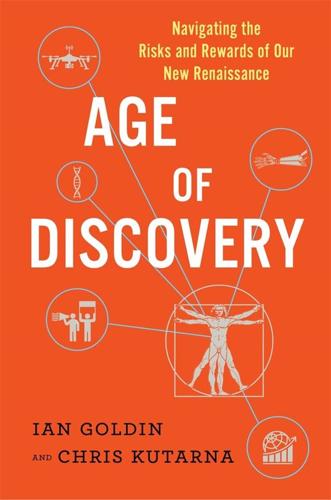
Age of Discovery: Navigating the Risks and Rewards of Our New Renaissance
by
Ian Goldin
and
Chris Kutarna
Published 23 May 2016
This matters to health, because it turns out that the oldest parts of the human genome—those lines of our DNA code that have been battle-tested over eons of evolution and are the same in most all of us—are also the most bullet-proof. Most of the genetic weak spots in our armor lie amidst so-called rare variations—more recent lines of code that occur in less than 1 percent of people. In other words, human beings are the same, but different. Mass-produced medicine glosses over the latter point; personalized medicine will embrace it. In 2015, the US Food and Drug Administration (FDA) approved the first 3D-printed drugs, which can be custom-made to match each patient’s ideal dosage requirements and absorption capabilities. And parents can already purchase genetic tests to screen their children for hundreds of known mutations and disorders.

The Death of Cancer: After Fifty Years on the Front Lines of Medicine, a Pioneering Oncologist Reveals Why the War on Cancer Is Winnable--And How We Can Get There
by
Vincent T. Devita, Jr., M. D.
and
Elizabeth Devita-Raeburn
Published 3 Nov 2015
Or you can switch cell death on, which amounts to handing the cancer cell a sword and telling it to commit hara-kiri, thereby attacking another hallmark. An important part of managing patients now is to do a genetic analysis of their tumor tissue to determine its molecular structure and find treatable mutations and then to select a treatment based on the mutations. This is the essence of personalized medicine. We are no longer shooting in the dark. The best example is the treatment for chronic myeloid leukemia (CML), developed by my friend Brian Druker, the director of the Knight Cancer Institute at the Oregon Health and Science University. In the early 1970s, CML was incurable, and the average survival for CML was thirty-two months.
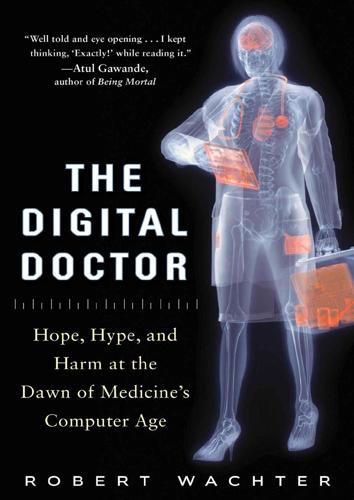
The Digital Doctor: Hope, Hype, and Harm at the Dawn of Medicine’s Computer Age
by
Robert Wachter
Published 7 Apr 2015
Rather, the system will determine each patient’s optimal blood pressure value, based on an analysis of risk factors, genes, and the ongoing monitoring of thousands of patients with similar risk profiles. The same will be true of cholesterol, glucose, and even cancer screening. The promise of personalized medicine will become a reality. Clinical research will also be transformed through the analysis of vast amounts of data on millions of patients. Determining the best treatment for high cholesterol, Crohn’s disease, or acute lymphocytic leukemia will no longer require expensive and elaborately choreographed clinical trials.

System Error: Where Big Tech Went Wrong and How We Can Reboot
by
Rob Reich
,
Mehran Sahami
and
Jeremy M. Weinstein
Published 6 Sep 2021
The rise of social control through surveillance technologies is what has brought the value of privacy to the fore. Even when we acknowledge its importance, we are at different moments willing to sacrifice privacy in order to obtain other benefits such as security (think of Taylor Swift), convenience (think of the free apps on your smartphone), and innovation (think of personalized medicine). But none of this is to say that privacy has no value. And with the arrival of a digital panopticon, there has never been less weight placed on privacy. Indicators of this view were present more than twenty years ago. As Scott McNealy, the CEO of Sun Microsystems, proclaimed to a reporter in 1995, “You have zero privacy anyway.

Doing Data Science: Straight Talk From the Frontline
by
Cathy O'Neil
and
Rachel Schutt
Published 8 Oct 2013
Average Versus the Individual Randomized clinical trials measure the effect of a certain drug averaged across all people. Sometimes they might bucket users to figure out the average effect on men or women or people of a certain age, and so on. But in the end, it still has averaged out stuff so that for a given individual we don’t know what they effect would be on them. There is a push these days toward personalized medicine with the availability of genetic data, which means we stop looking at averages because we want to make inferences about the one. Even when we were talking about Frank and OK Cupid, there’s a difference between conducting this study across all men versus Frank alone. A/B Tests In software companies, what we described as random experiments are sometimes referred to as A/B tests.
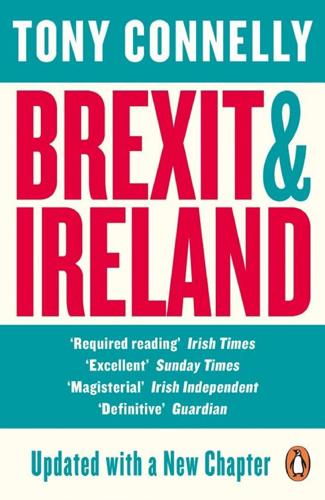
Brexit and Ireland: The Dangers, the Opportunities, and the Inside Story of the Irish Response
by
Tony Connelly
Published 4 Oct 2017
‘It’s hard to measure the effect of Brexit,’ says Professor Mark Lawler, who runs the Centre for Cancer Research and Cell Biology at Queen’s. ‘If you haven’t been invited to the party, you don’t know what you’ve missed.’ The centre is the jewel in the crown of UK cancer research, leading expertise on colorectal cancer, immunotherapy, genomics, precision and personalized medicine. In January 2017, Professor Lawler was the architect of a 60-strong coalition of patient advocates, healthcare professionals and scientists from 20 EU countries that published a blueprint for increasing cancer survival rates to 70 per cent by 2035. It works closely with industry, and has scientists working in its research building from Almac, the company that announced it was moving part of its manufacturing and distribution operations to Dundalk from Craigavon.

New Laws of Robotics: Defending Human Expertise in the Age of AI
by
Frank Pasquale
Published 14 May 2020
No one should be allowed to contract away the right to inspect those data when AI causes harm.36 The next section describes how regulators can help assure better inputs of data to AI-driven innovation and how they can promote quality outputs from such technology. WHO WILL TEACH THE LEARNING HEALTH CARE SYSTEM? We might once have categorized a melanoma simply as a type of skin cancer. But that is beginning to seem as outdated as calling pneumonia, bronchitis, and hay fever “cough.” Personalized medicine will help more oncologists gain a more sophisticated understanding of a given cancer as, say, one of a number of mutations. If they are properly combined, compared, and analyzed, digitized records could indicate which combination of chemotherapy, radioimmunotherapy, surgery, and radiation has the best results for that particular subtype of cancer.

The Equality Machine: Harnessing Digital Technology for a Brighter, More Inclusive Future
by
Orly Lobel
Published 17 Oct 2022
Since cost is one of the main barriers to women getting mammograms, AI can save lives simply by providing testing at a lower cost. Healthcare and medical research have for centuries been plagued by a white male standard model. Even the Human Genome Project—the world’s largest collaborative biological project—began with a skewed focus: Africans’ genes were not studied at the same rate, slowing down the development of personalized medicine for minorities.32 We already know that incomplete or skewed data fed to algorithms can lead to bias: bias in, bias out. In 2019, an article in Science revealed how algorithms pertaining to blood pressure have a built-in racial bias: Black patients were deemed to be at lower risk than white patients when they were equally sick.

The Coming Wave: Technology, Power, and the Twenty-First Century's Greatest Dilemma
by
Mustafa Suleyman
Published 4 Sep 2023
Thanks to lifesaving treatments like vaccines, we are already accustomed to the idea of intervening in our biology to help us fight disease. The field of systems biology aims to understand the “larger picture” of a cell, tissue, or organism by using bioinformatics and computational biology to see how the organism works holistically; such efforts could be the foundation for a new era of personalized medicine. Before long the idea of being treated in a generic way will seem positively medieval; everything, from the kind of care we receive to the medicines we are offered, will be precisely tailored to our DNA and specific biomarkers. Eventually, it might be possible to reconfigure ourselves to enhance our immune responses.

The New Digital Age: Transforming Nations, Businesses, and Our Lives
by
Eric Schmidt
and
Jared Cohen
Published 22 Apr 2013
Inside hospitals, robots will take on more responsibilities, as surgeons increasingly let sophisticated machines handle difficult parts of certain procedures, where delicate or tedious work is involved or a wider range of motion is required.2 Advances in genetic testing will usher in the era of personalized medicine. Through targeted tests and genome sequencing (decoding a person’s full DNA), doctors and disease specialists will have more information about patients, and what might help them, than ever before. Despite steady scientific progress, severe negative reactions to prescribed drugs remain a leading cause of hospitalization and death.
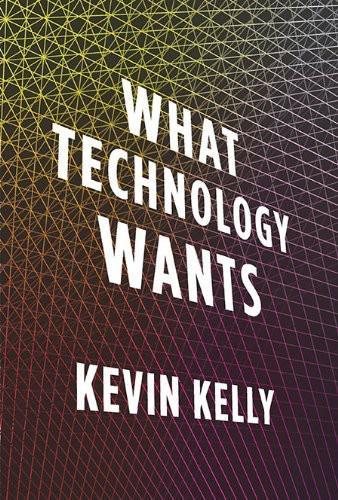
What Technology Wants
by
Kevin Kelly
Published 14 Jul 2010
One thousand teleportation stations rejuvenate vacation travel. One billion teleportation stations overturn commutes, reimagine globalism, introduce tele-lag sickness, reintroduce the grand spectacle, kill the nation-state, and end privacy. One thousand human genetic sequences jump-start personalized medicine. One billion genetic sequences every hour enable real-time genetic damage monitoring, upend the chemical industry, redefine illness, make genealogies hip, and launch “ultraclean” lifestyles that make organic look filthy. One thousand screens the size of buildings keep Hollywood going. One billion screens everywhere become the new art, create a new advertising medium, revitalize cities at night, accelerate locative computing, and rejuvenate the commons.
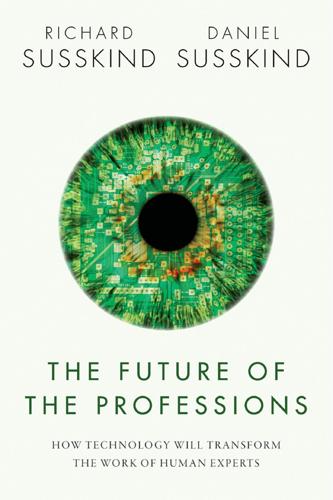
The Future of the Professions: How Technology Will Transform the Work of Human Experts
by
Richard Susskind
and
Daniel Susskind
Published 24 Aug 2015
‘vascular networks’ in Luiz Bertassoni et al., ‘Hydrogel bioprinted microchannel networks for vascularization of tissue engineering constructs’, Lab on a Chip, 14: 13 (2014), 2202–11. 47 <http://www.organdonor.gov> and ‘Fact Sheets: Transplants save lives’, NHS website, Aug. 2014 <http://www.organdonation.nhs.uk/newsroom/fact_sheets/transplants_save_lives.asp> (accessed 9 March 2015). 48 Erika Check Hayden, ‘Technology: The $1,000 Genome’, Nature, 19 Mar. 2014. 49 Francis S. Collins, The Language of Life: DNA and the Revolution in Personalized Medicine (2010), p. xviii discusses the services, but their costs are now far lower. See e.g. the $99 service at <https://www.23andme.com> (accessed 27 March 2015). 50 Richard P. Feynman, ‘Plenty of Room at the Bottom’, talk to the American Physical Society at Caltech, Dec. 1959, p. 5 <http://www.pa.msu.edu/~yang/RFeynman_plentySpace.pdf> (accessed 27 March 2015). 51 Miguel Helft, ‘Google’s Larry Page: The Most Ambitious CEO in the Universe’, Fortune Magazine, 13 Nov. 2014 <http://fortune.com> (accessed 27 March 2015). 52 David L.

The Zero Marginal Cost Society: The Internet of Things, the Collaborative Commons, and the Eclipse of Capitalism
by
Jeremy Rifkin
Published 31 Mar 2014
The Creative Commons license has been implemented by the Harvard University Medical School in its Personal Genome Project.25 This is a long-term cohort study that aims to sequence and publicize the genome and records of 100,000 volunteers in order to advance research in the field of customized personal medicine.26 All the genome data covered by a Creative Commons license will be put in the public domain and be made available on the Internet to allow scientists open and free access for their laboratory research.27 Despite the success of the Creative Commons licensing, Lessig takes every opportunity to distance himself from what he calls “a growing copyright abolitionist movement.”28 He believes that copyright will remain a viable part of the coming era but will need to make room for open-source licensing in a world that will be lived partially in the market and partially on the Commons.

Lifespan: Why We Age—and Why We Don't Have To
by
David A. Sinclair
and
Matthew D. Laplante
Published 9 Sep 2019
It won’t be long before prescribing a drug without first knowing a patient’s genome will seem medieval. And vitally, with genomic information aiding in our doctors’ decisions, we won’t have to wait to become sick to know what treatments will work best to prevent those diseases from developing in the first place. As Julie Johnson, the director of the University of Florida’s Personalized Medicine Program, has pointed out, we are about to enter a world in which our genomes will be sequenced, stored, and already red-lighted for treatments that have been demonstrated to have adverse effects on people with similar gene types and combinations as we have.14 Likewise, we’ll be green-lighted for treatments that are known to work for people with similar genes, even if those treatments don’t work for most other people most of the time.
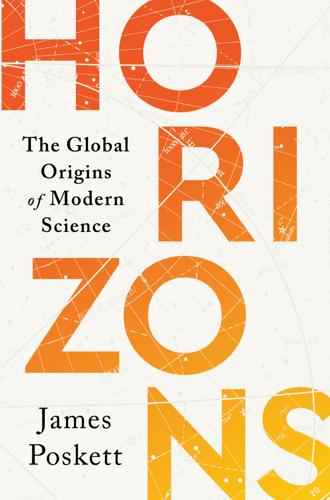
Horizons: The Global Origins of Modern Science
by
James Poskett
Published 22 Mar 2022
The end of the Cold War was not the end of history, and the expansion of globalization during the 1990s did not bring about a more harmonious world. The Human Genome Project certainly did not put an end to racism. As we are now all too aware, globalization – in science, as in society more generally – in fact led to even greater fragmentation, dividing people more than ever and reinforcing existing inequalities. Even the promise of personalized medicine largely failed to materialize, whilst scientists continue to debate the ethics of gene editing. All this was reflected in the field of genetics as it developed throughout the 2000s. Almost as soon as the Human Genome Project was complete, scientists and political leaders began to challenge the idea that a single reference genome could stand in for the whole of humanity.

Nexus: A Brief History of Information Networks From the Stone Age to AI
by
Yuval Noah Harari
Published 9 Sep 2024
Ibid. 60. Matthew Hutson, “How Researchers Are Teaching AI to Learn Like a Child,” Science, May 24, 2018, www.science.org/content/article/how-researchers-are-teaching-ai-learn-child; Oliwia Koteluk et al., “How Do Machines Learn? Artificial Intelligence as a New Era in Medicine,” Journal of Personalized Medicine 11 (2021), article 32; Mohsen Soori, Behrooz Arezoo, and Roza Dastres, “Artificial Intelligence, Machine Learning, and Deep Learning in Advanced Robotics: A Review,” Cognitive Robotics 3 (2023): 54–70. 61. Christian, Alignment Problem, 31; D’Ignazio and Klein, Data Feminism, 29–30. 62.

Never Bet Against Occam: Mast Cell Activation Disease and the Modern Epidemics of Chronic Illness and Medical Complexity
by
Lawrence B. Afrin M. D.
,
Kendra Neilsen Myles
and
Kristi Posival
Published 15 Jan 2016
My study will be looking in the study subjects’ blood samples for mutations in a wide array of other mast cell regulatory genes, too. Results hopefully will be published by late 2016. Chapter 24: What We Know About the Genetics of Mast Cell Disease (Short Answer: Not Much – Yet) We’ve been hearing for several years now that the era of genomically personalized medicine is almost upon us, a time when at a cost of perhaps a few hundred dollars we will be able to determine anybody’s complete genetic code which – and here’s where we wave our hands in a magic gesture – will tell us all that’s wrong with us now and all that’s likely to go wrong with us. Yeah, right.

Future Crimes: Everything Is Connected, Everyone Is Vulnerable and What We Can Do About It
by
Marc Goodman
Published 24 Feb 2015
In the end, for the first time ever, the National Science Advisory Board for Biosecurity stepped in and asked the journals to limit the details published, to which they temporarily agreed. This particular risk was momentarily avoided, but the code will eventually leak, and others will surely be created. While a broad-based bioterror attack would be devastating, synbio makes it possible to target not only a whole population but possibly a single individual among millions. Personalized medicine has demonstrated it is possible to target a single cancer cell while leaving all surrounding cells intact, but the flip side is personalized bioweapons. In the future, would-be bio-assassins need only recover some genetic material left behind on a fork or spoon at a restaurant, perhaps from a high-profile politician or celebrity, to create a bespoke weaponized virus.

The Stack: On Software and Sovereignty
by
Benjamin H. Bratton
Published 19 Feb 2016
What we eat, in particular, can fundamentally alter the alien ecology in our gut, for better or worse. A poor diet can force the evolution of the biome toward an unhealthy state in which it no longer supports our health and instead could contribute to significant malaise in the entire biological mechanism. Smarr's personal medicine is somewhat unusual in that the focus is shifted from the self-regard of his own somatic body toward the curation and gardening of this internal microbial civilization. Inside the shell of one's skin, there is far more DNA that is nonhuman than DNA that is human. You, the skin bag, are all too less human than human.